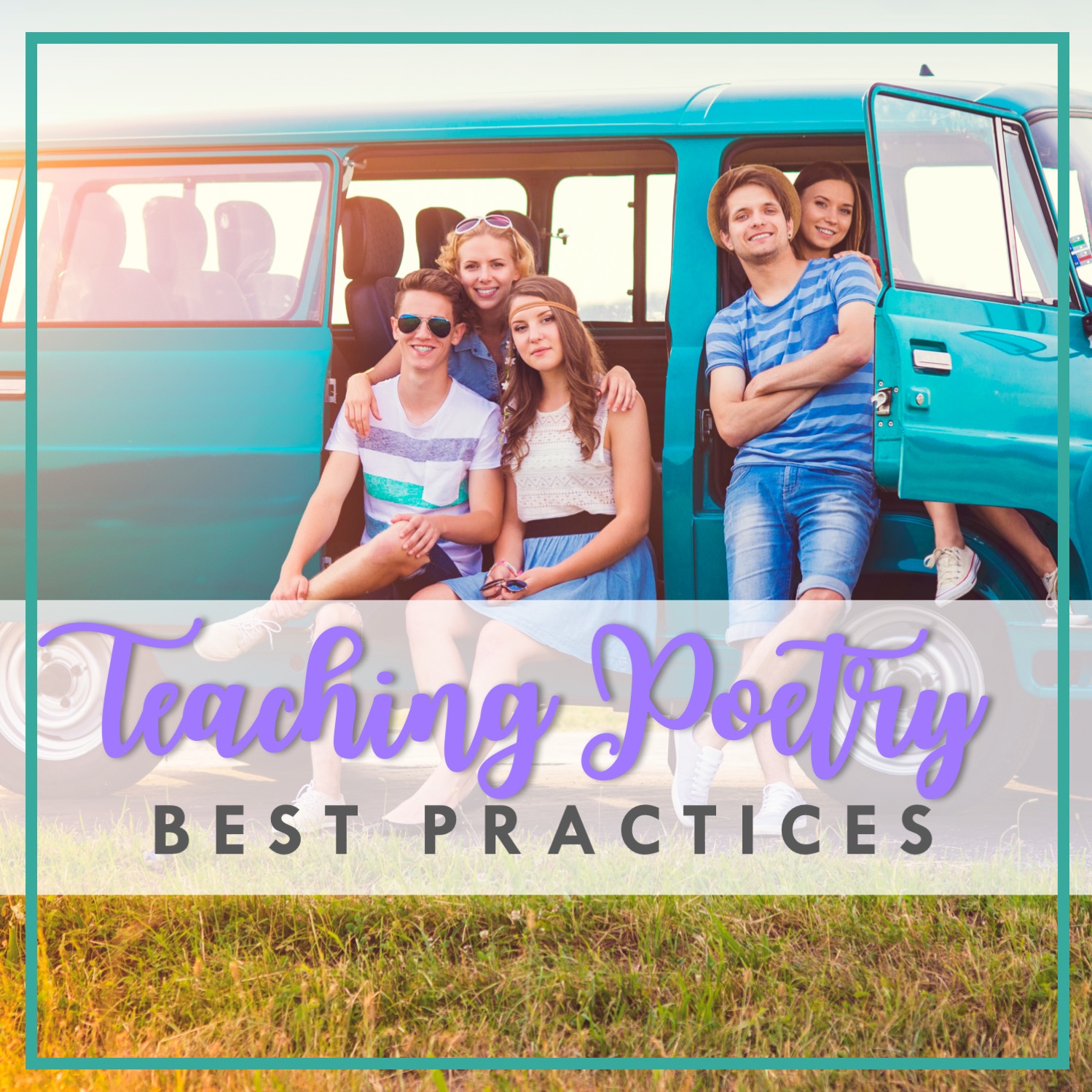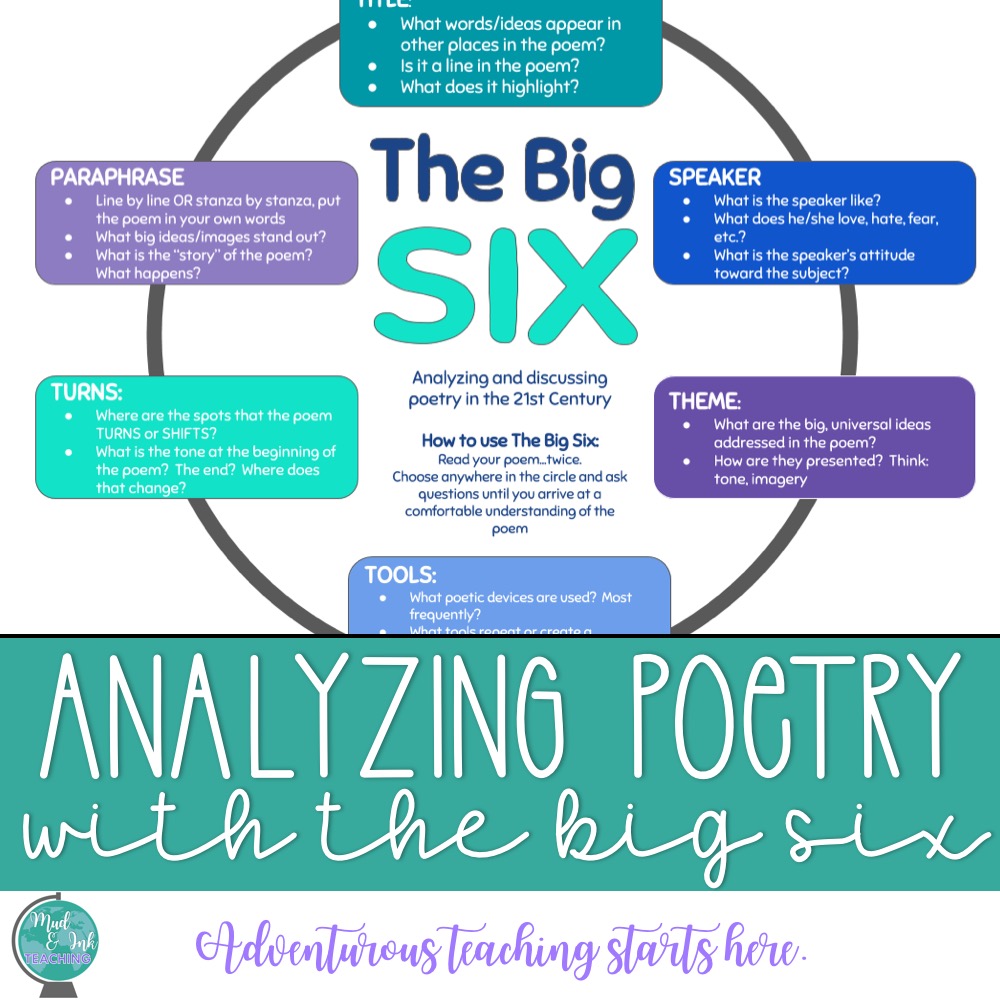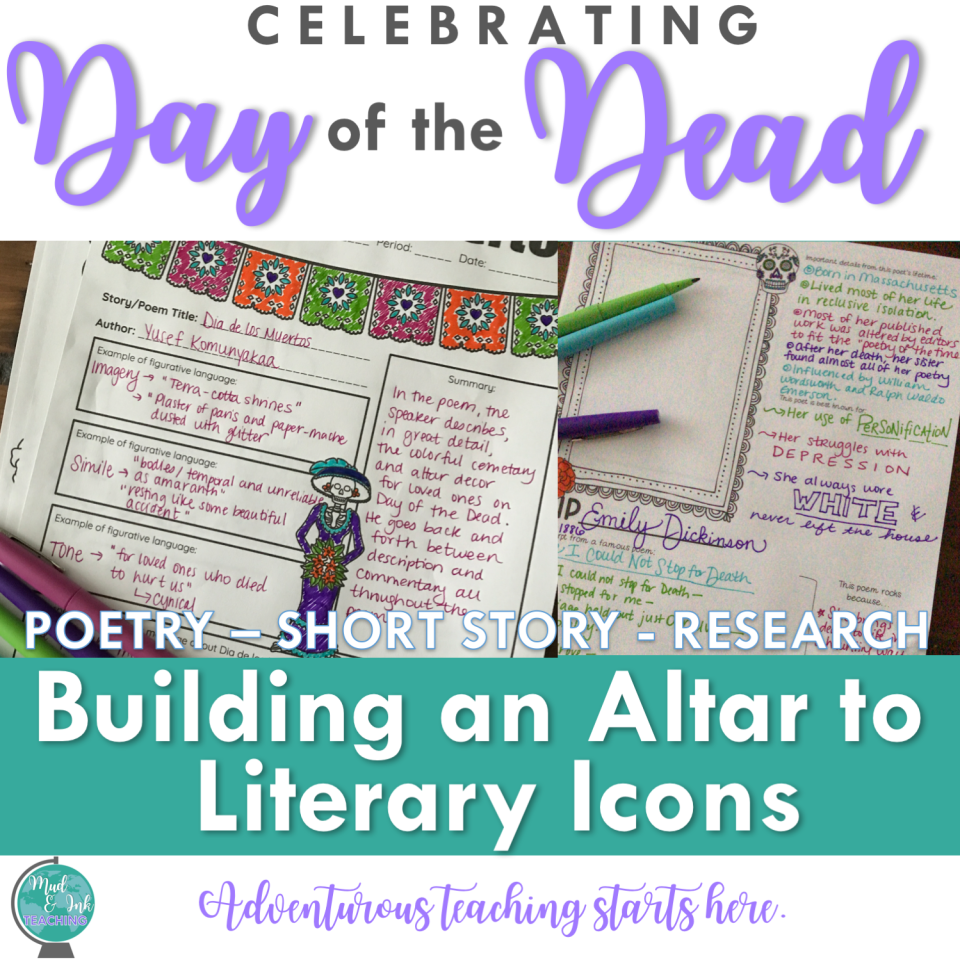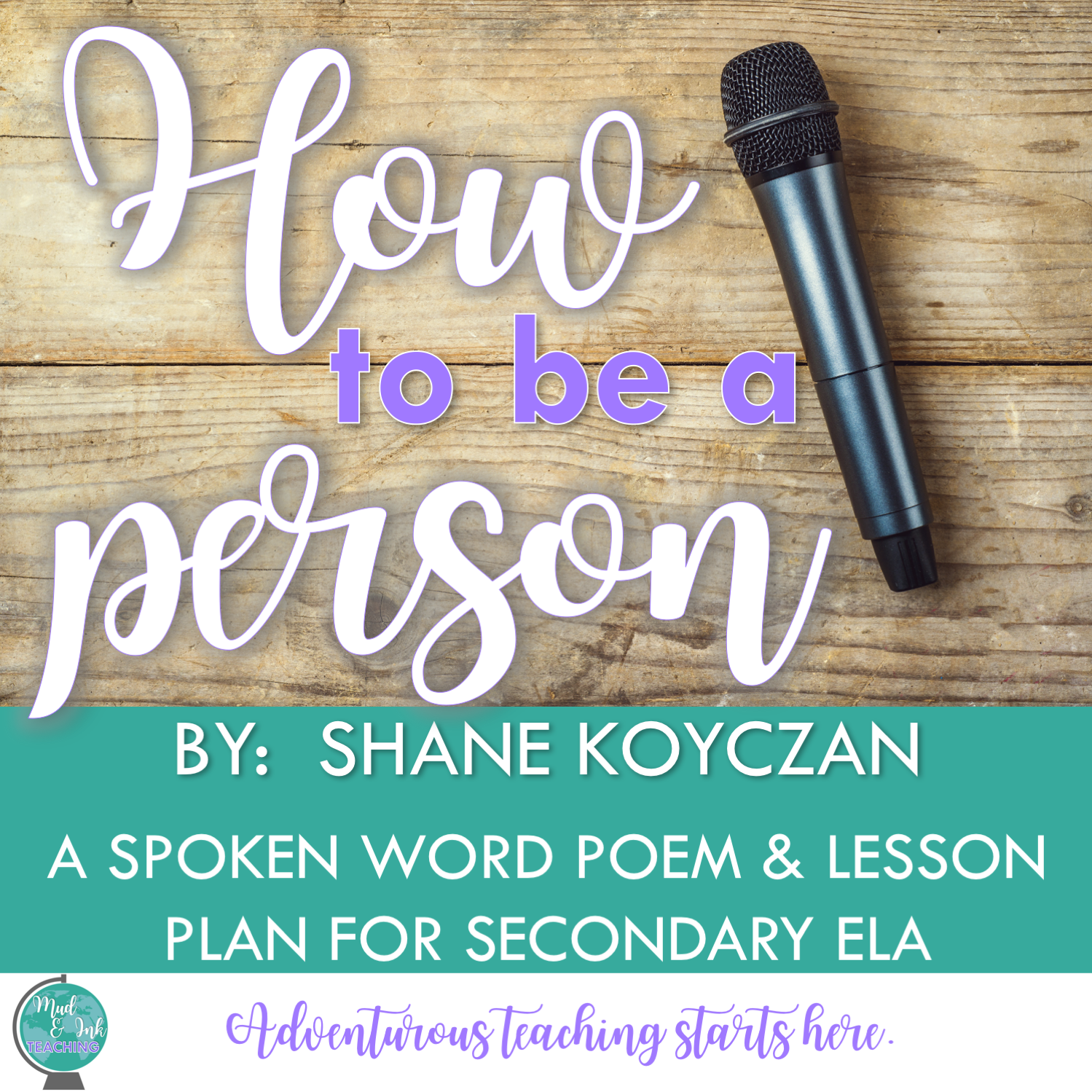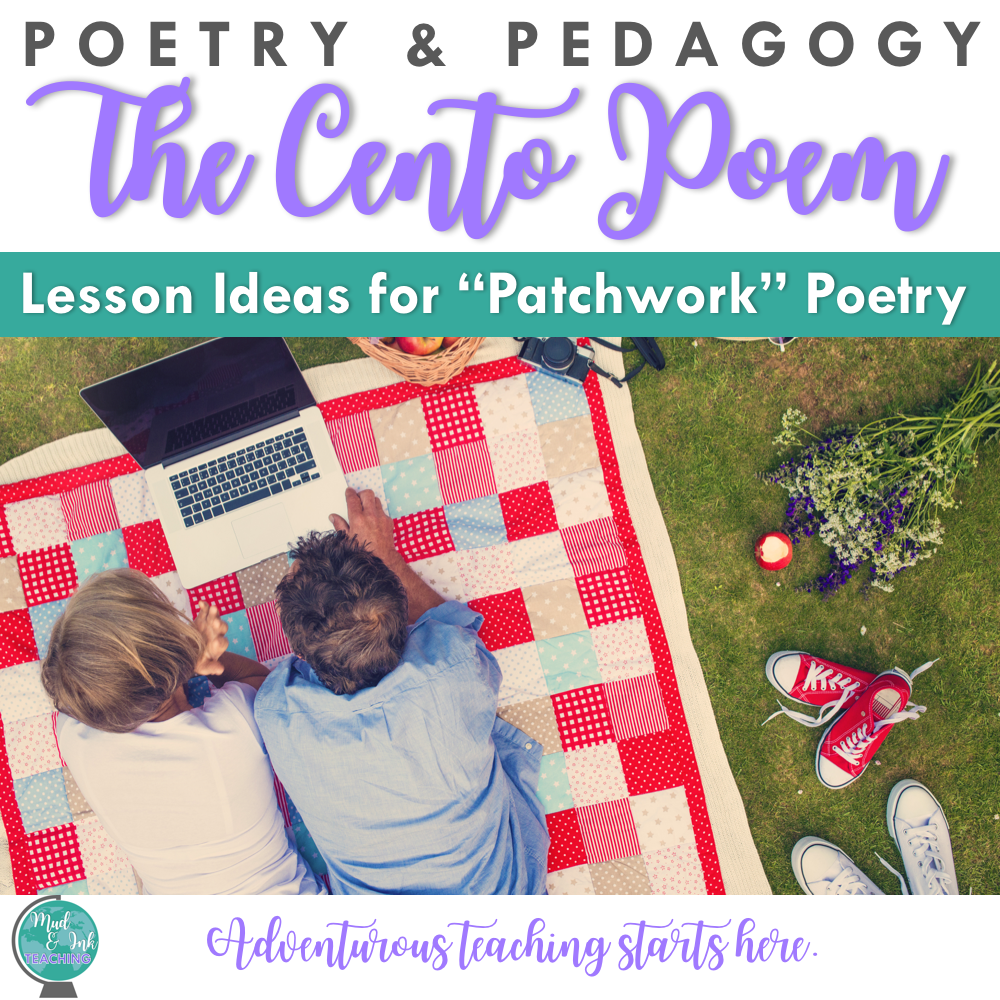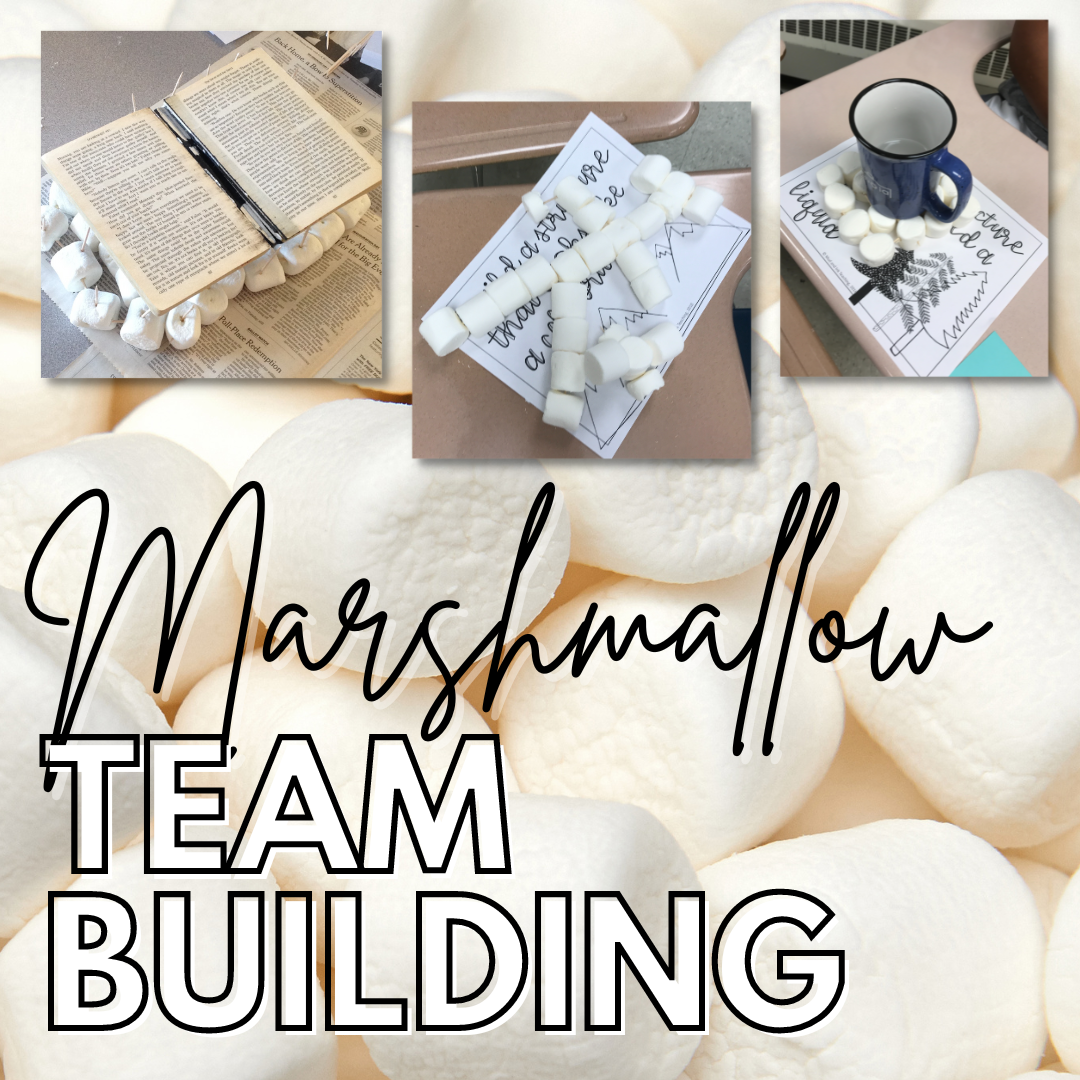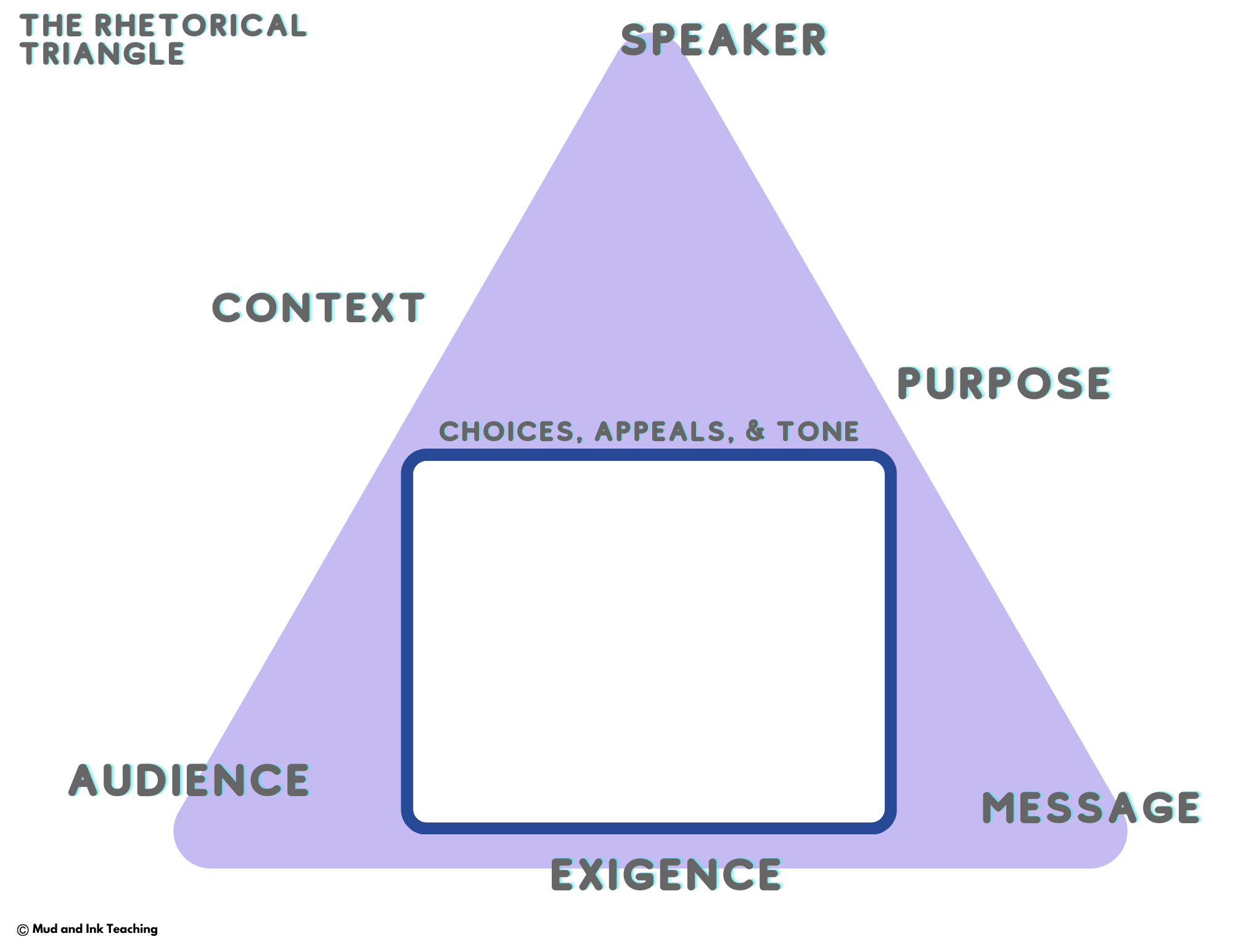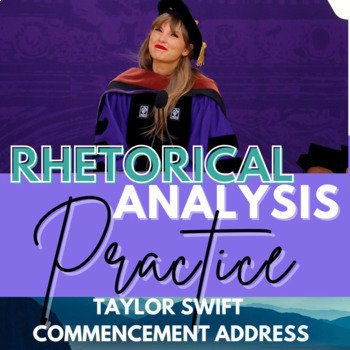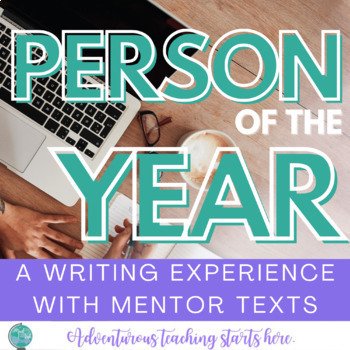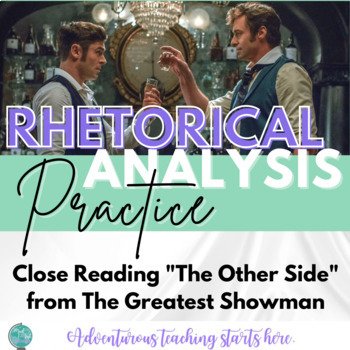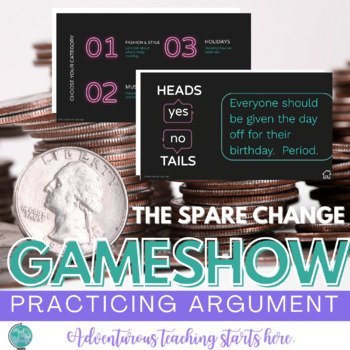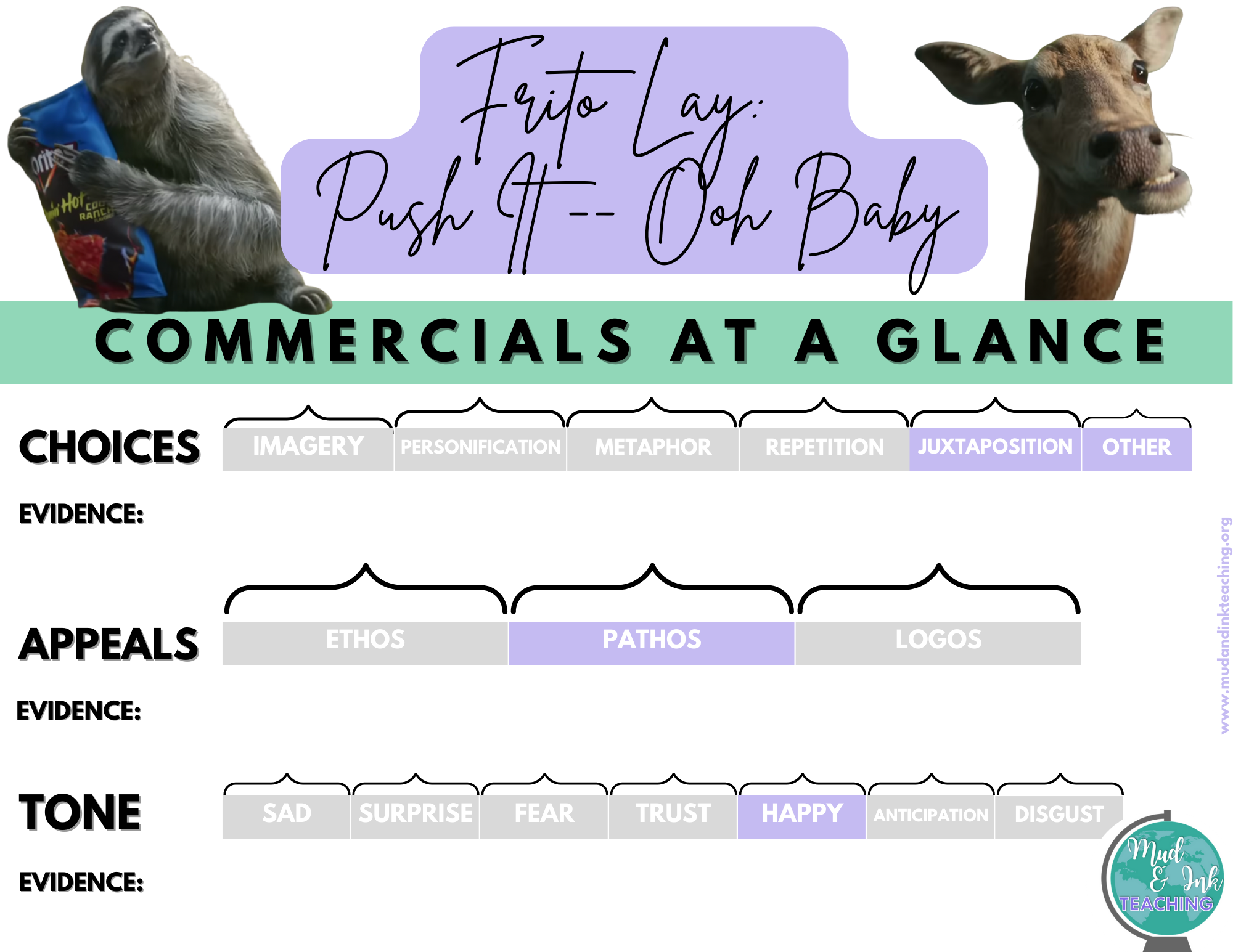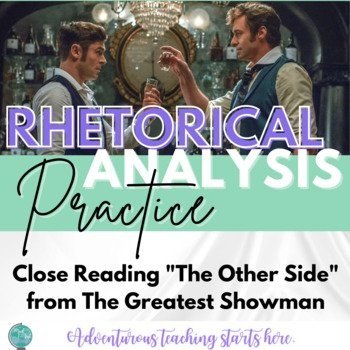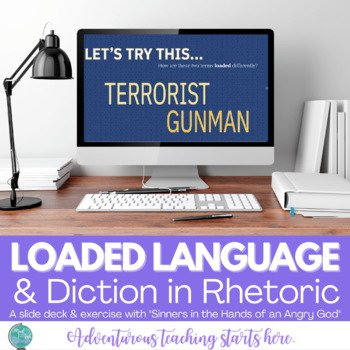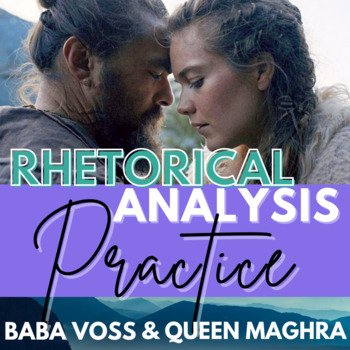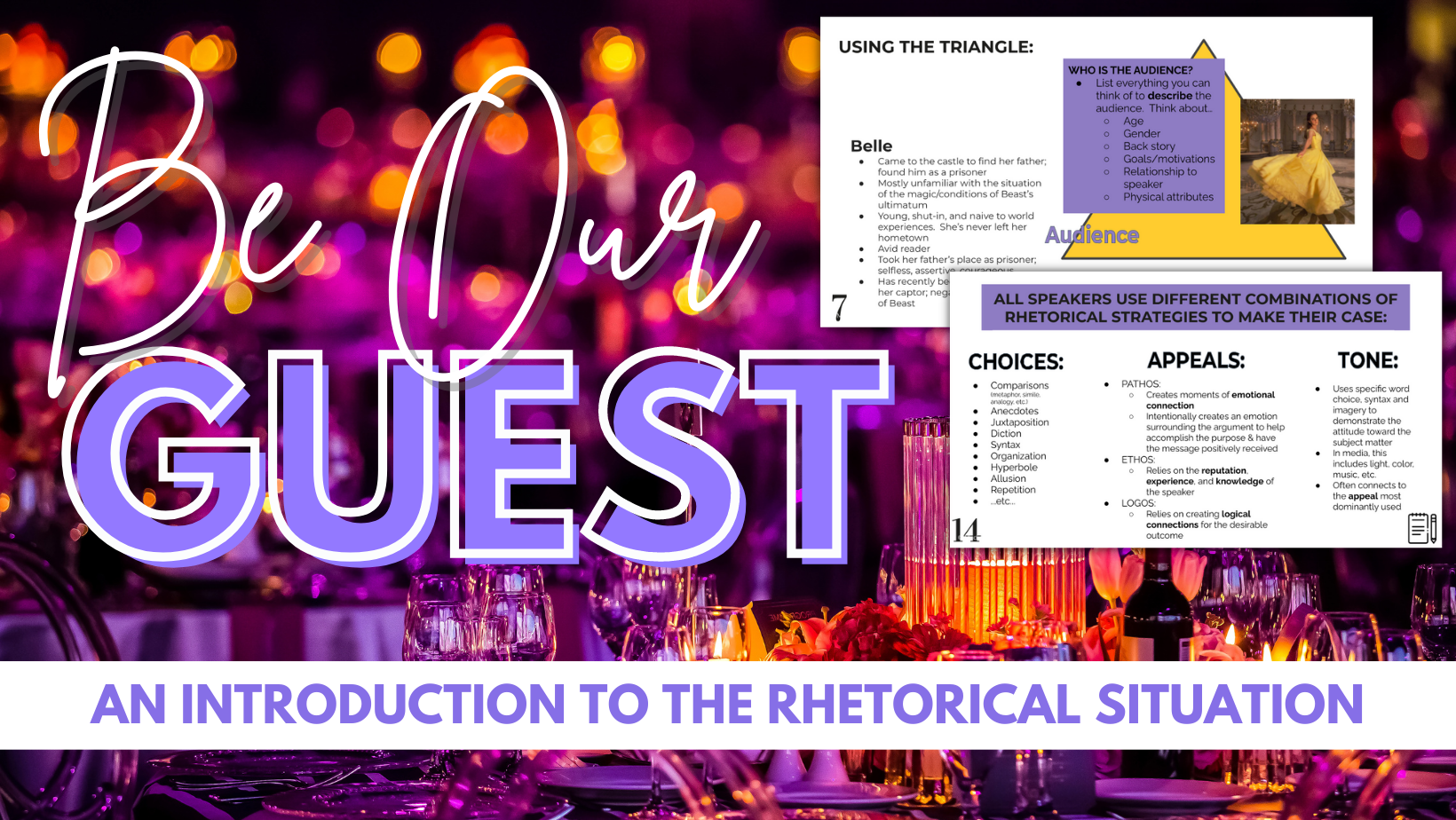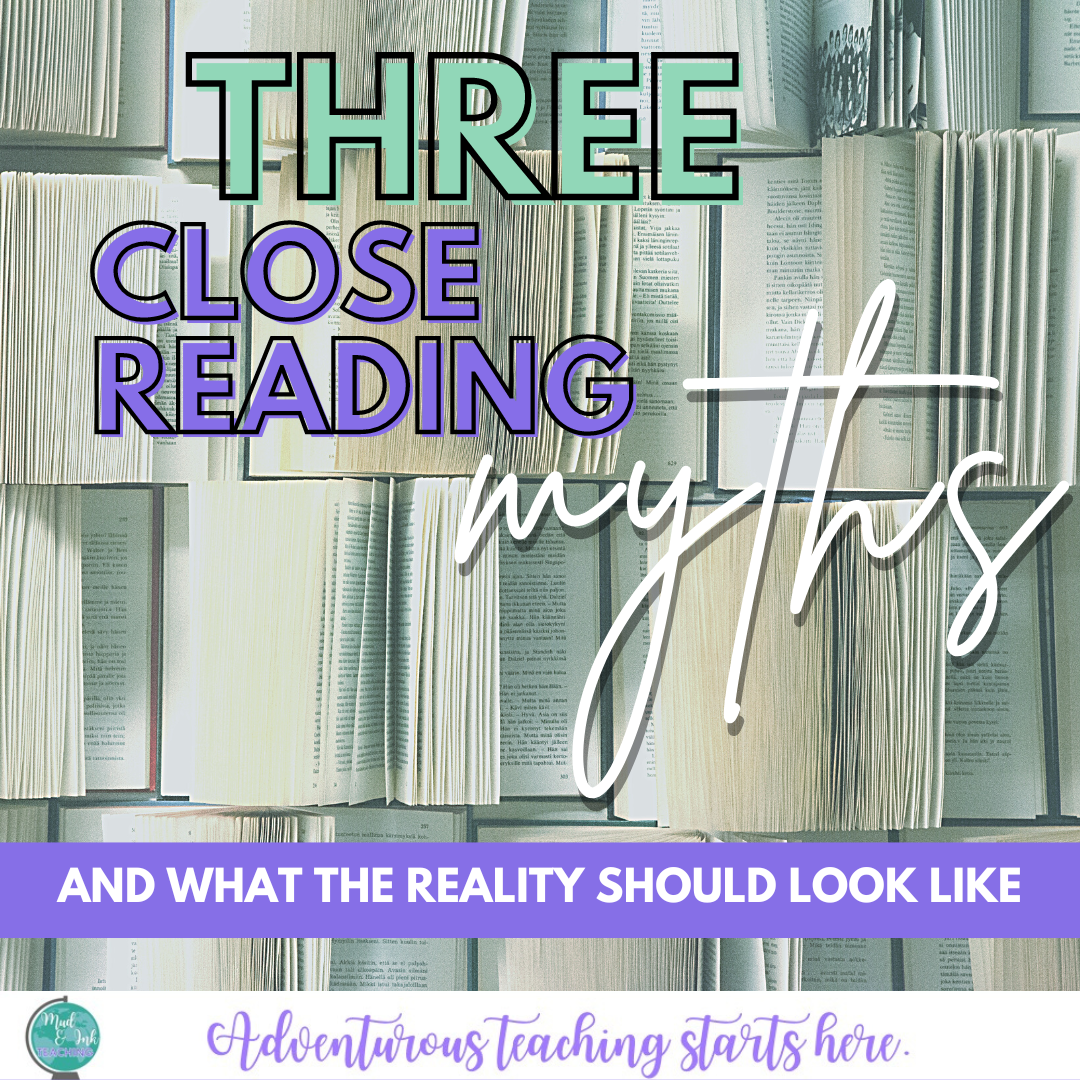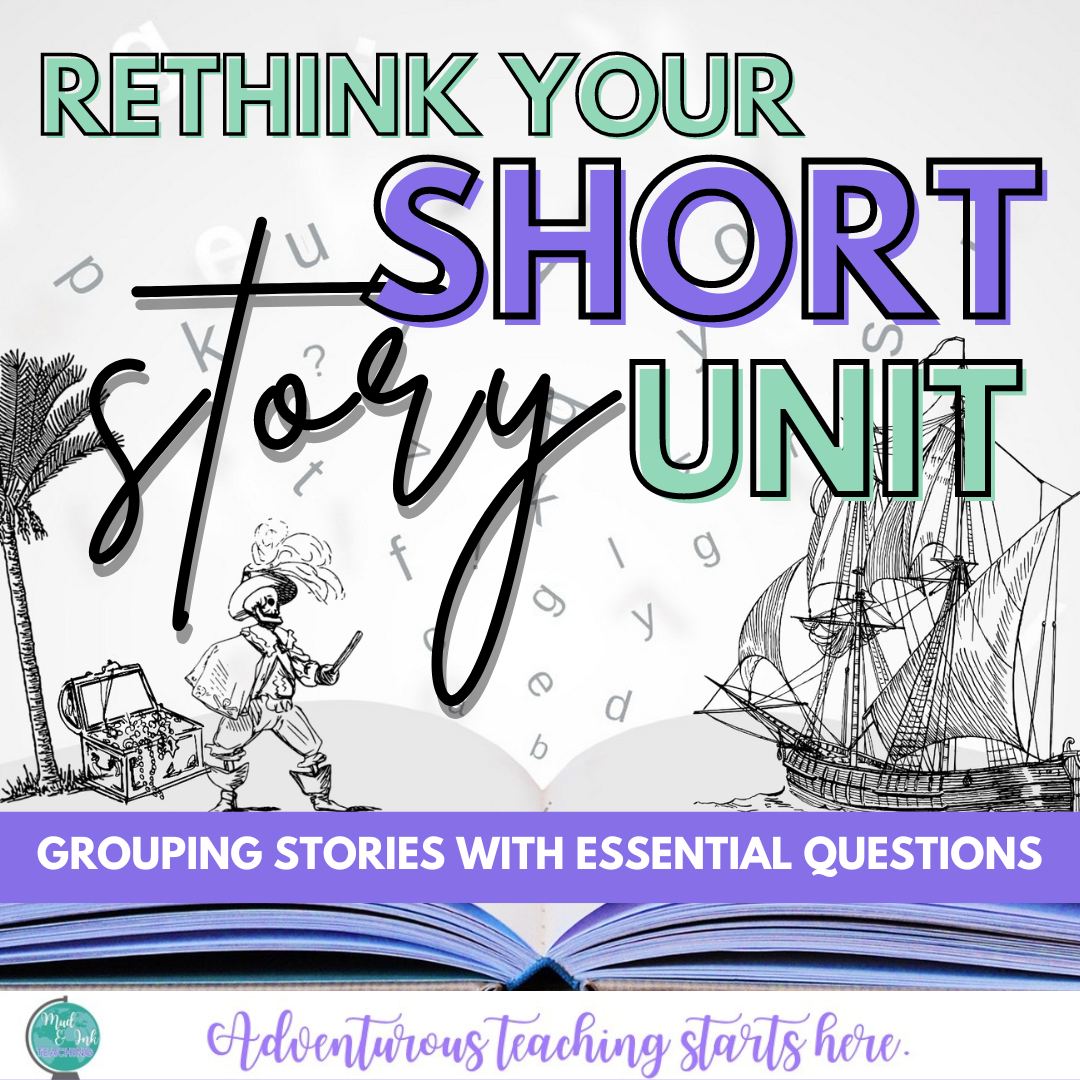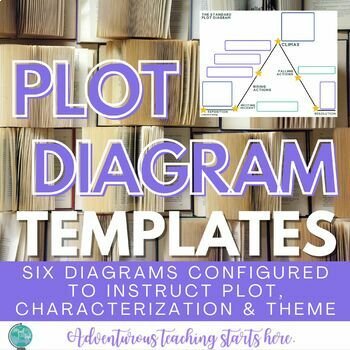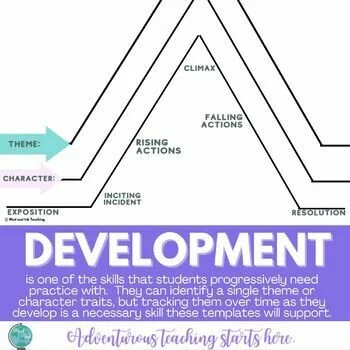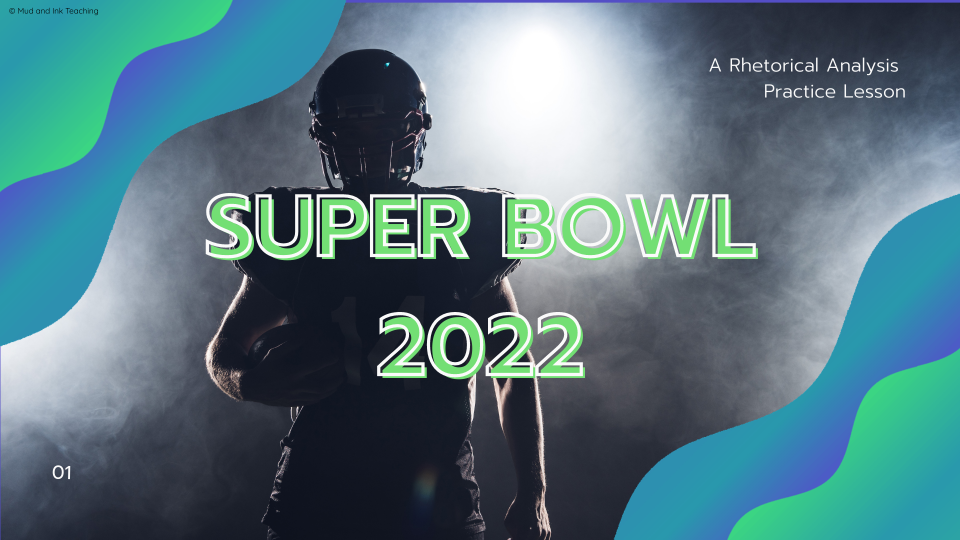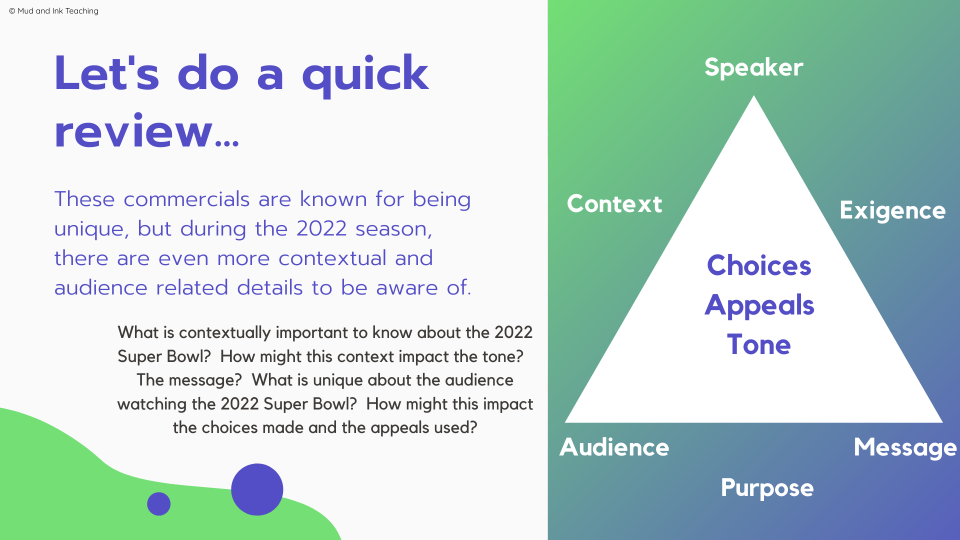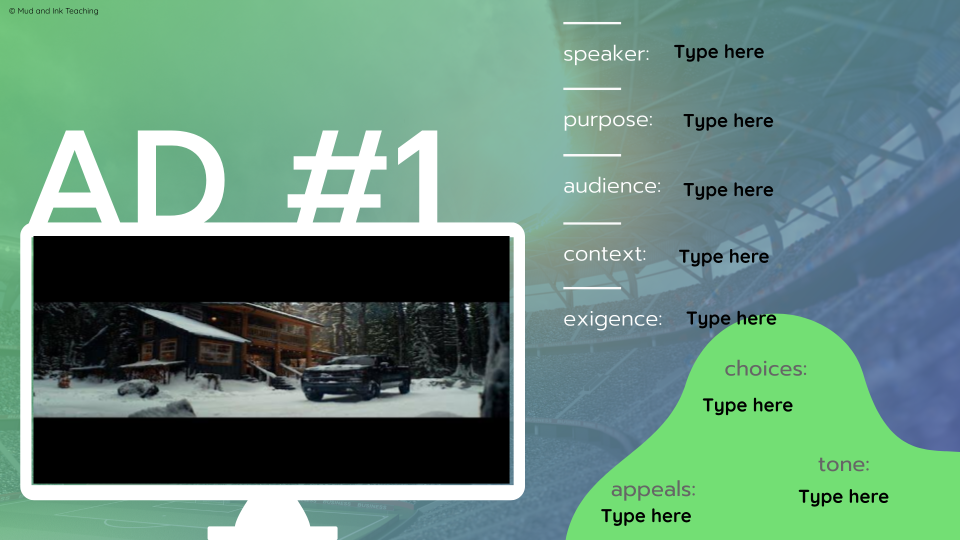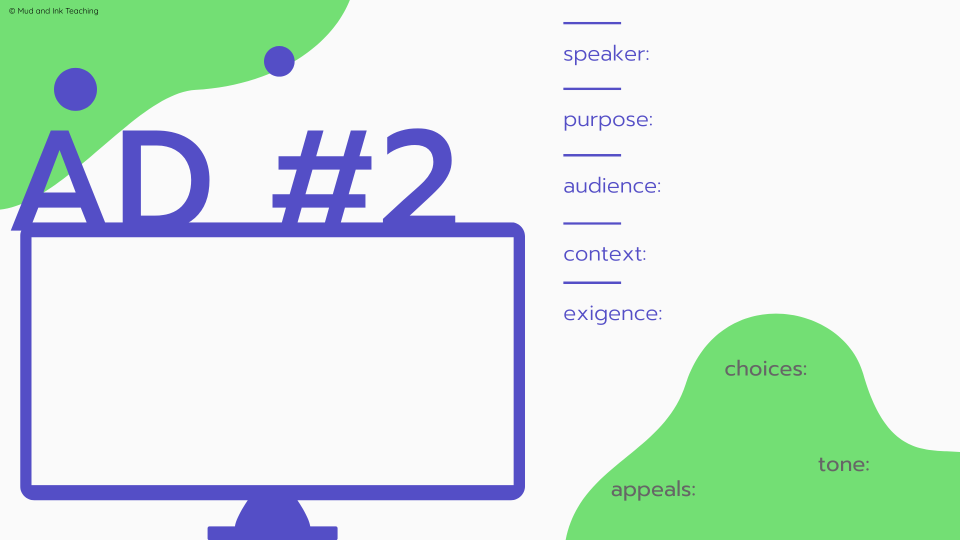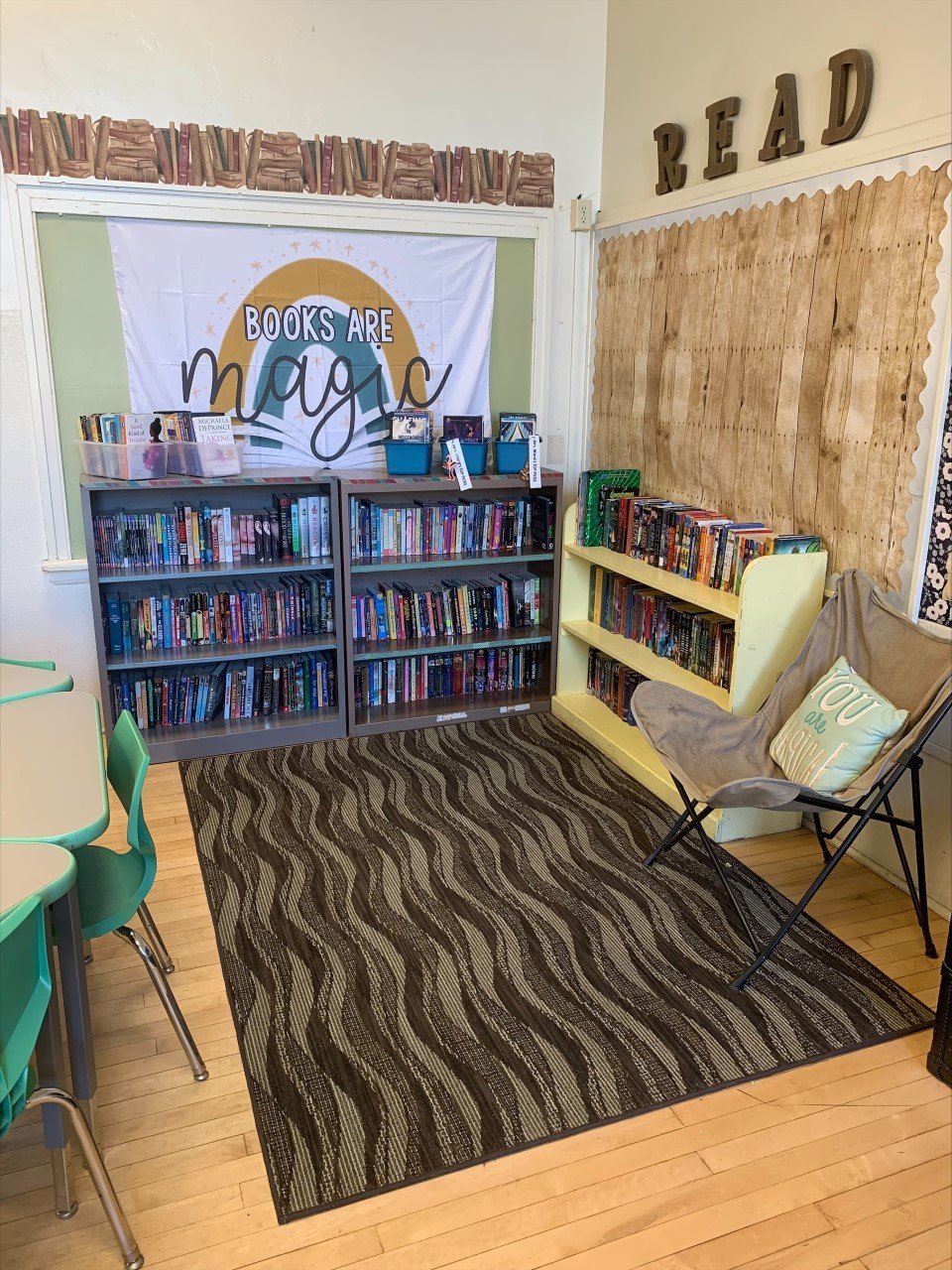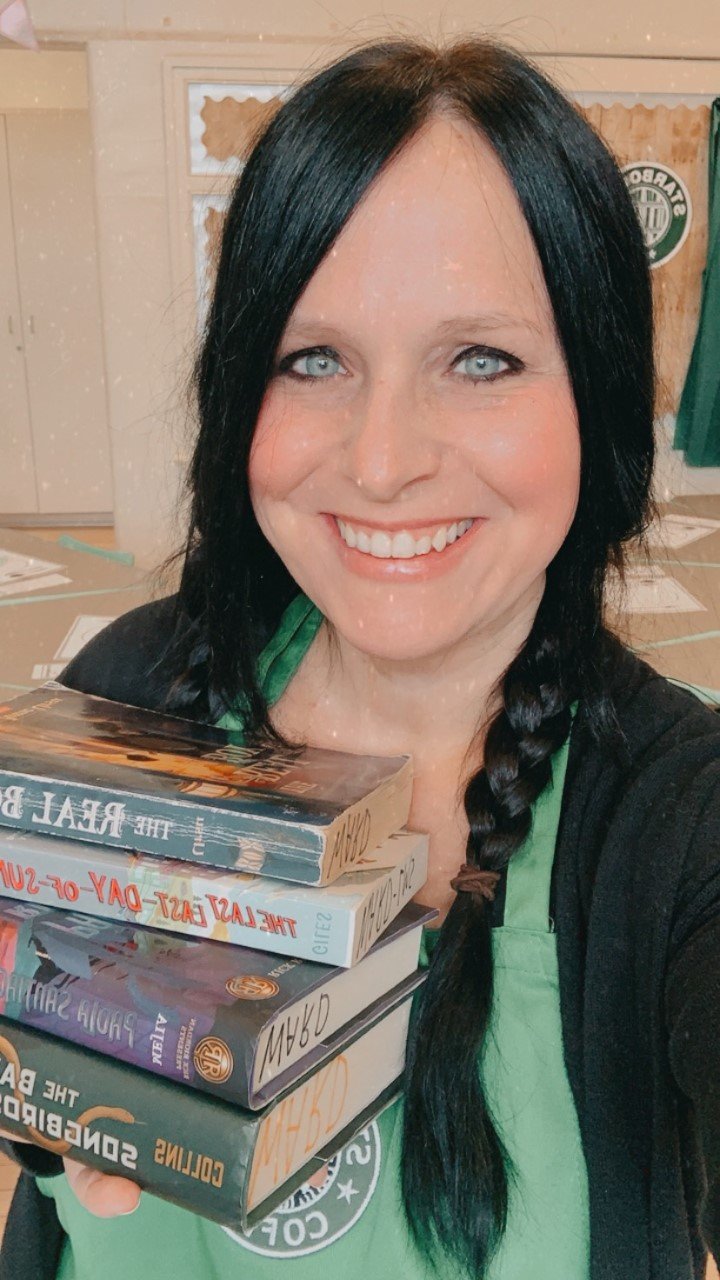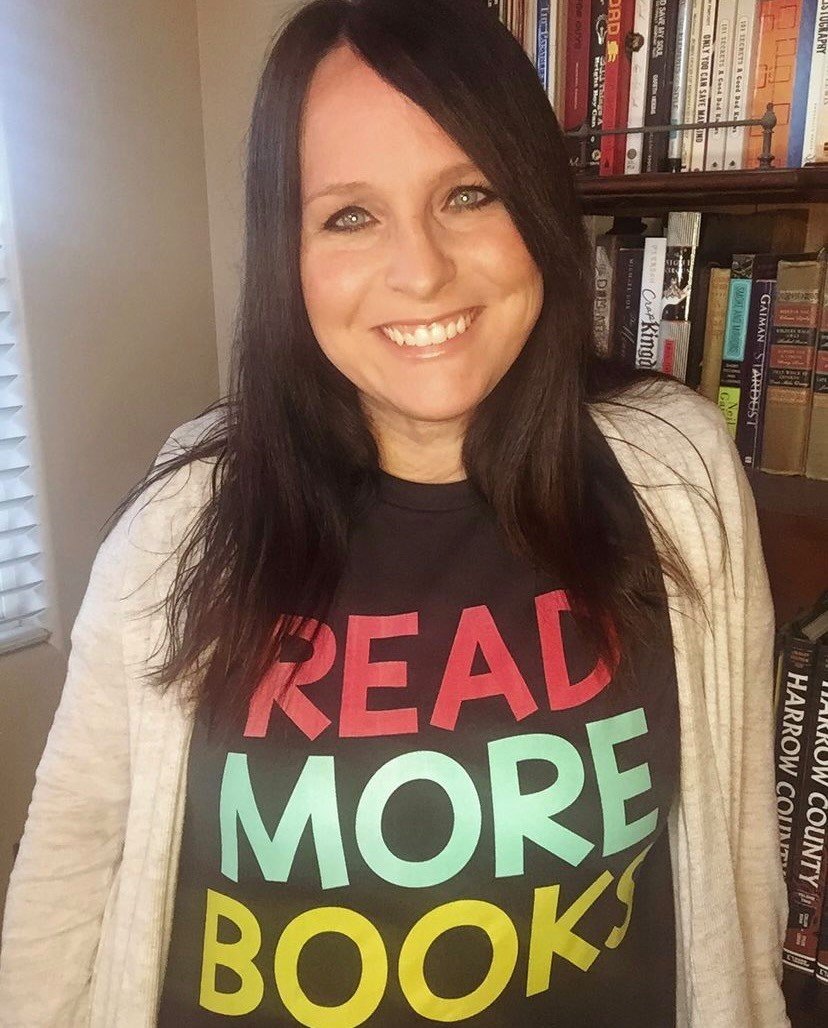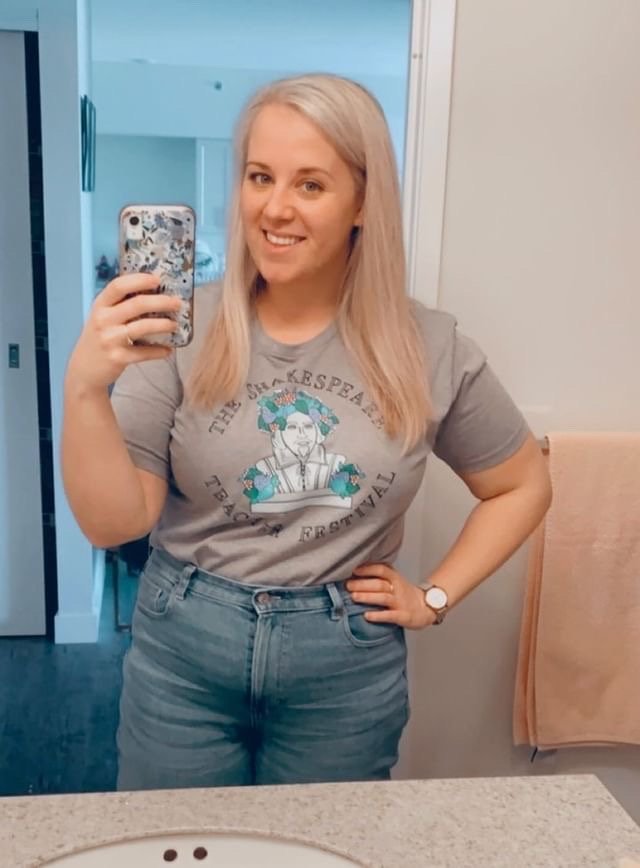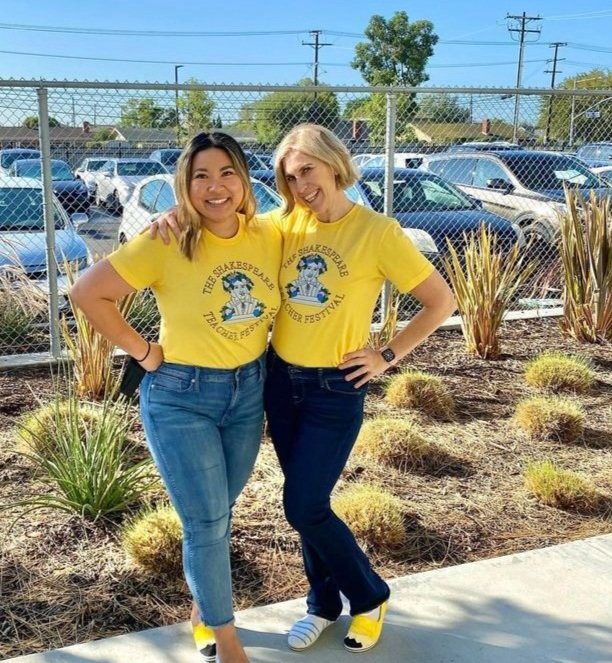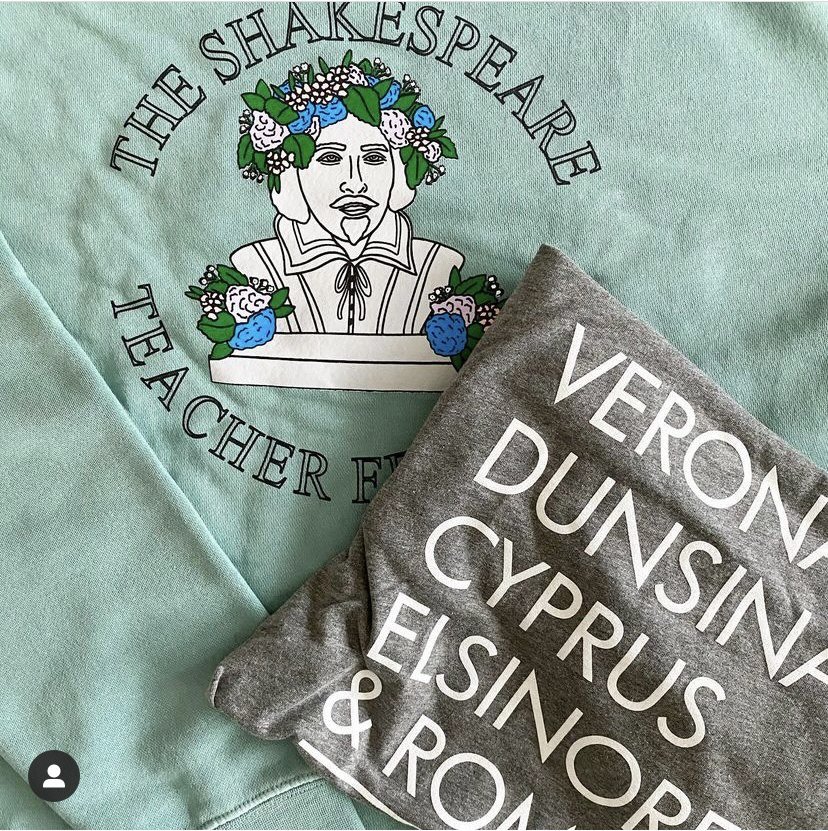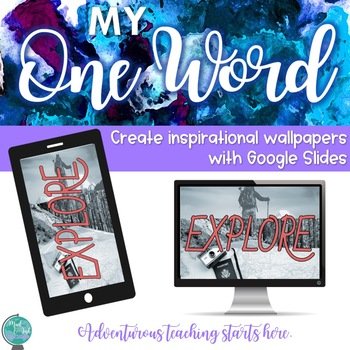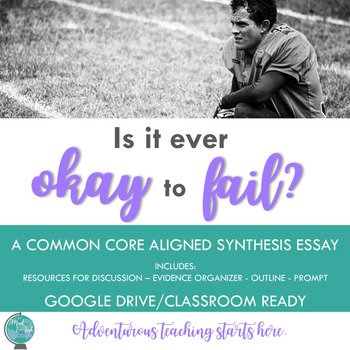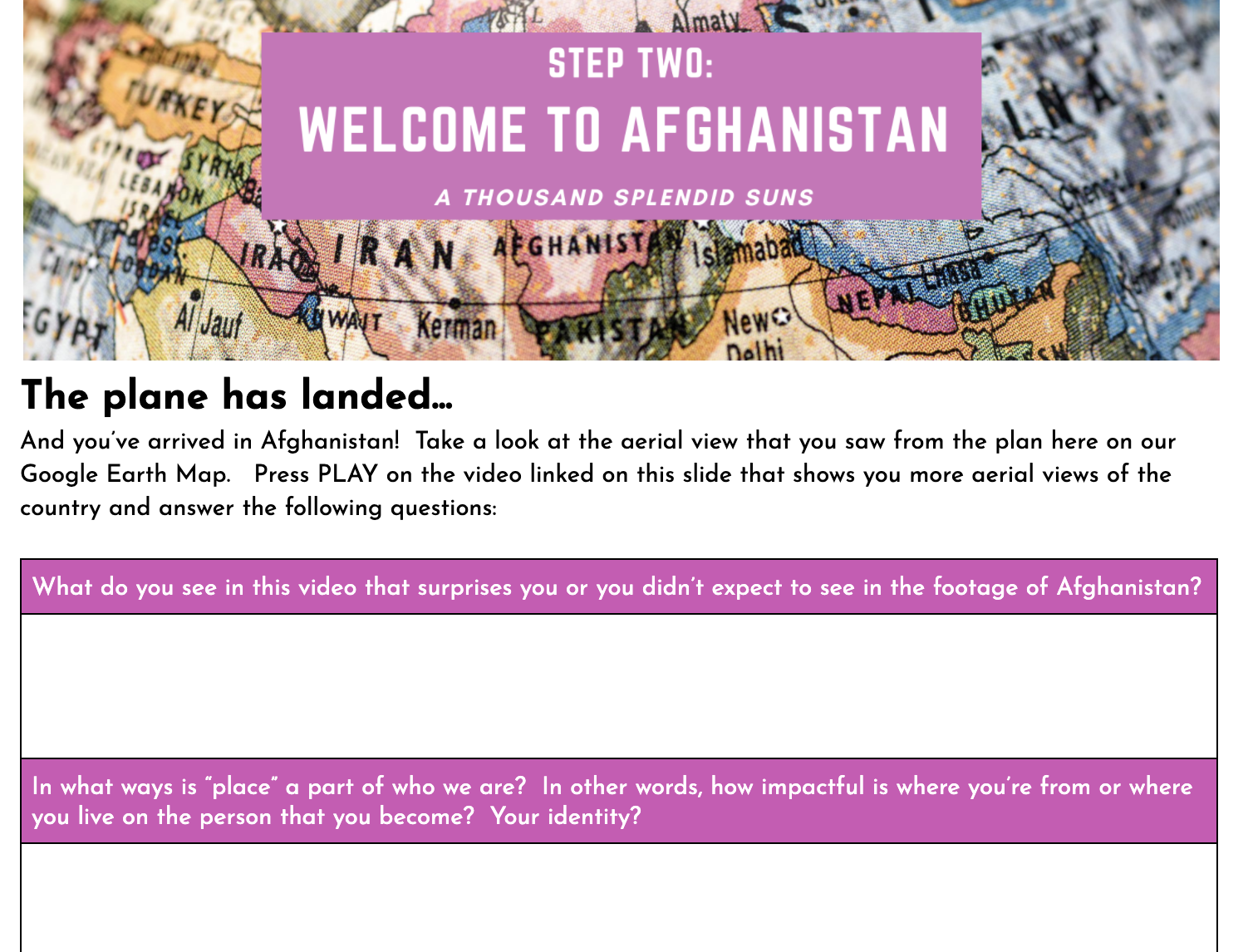
ADVENTUROUS TEACHING STARTS HERE.
A Valentine's Day Activity for Middle and High School: Boost Classroom Community with Warm Fuzzies
Fighting the Winter Blues
The winter months can be a bit of a drag for classroom teachers, and morale can really start to drop this time of year (for teachers and students). This is the perfect time of year to amp up your SEL practices and foster those student-teacher and staff relationships. Who doesn’t love a little fun in the midst of winter gloom? Building community in our classrooms is so important when we think about student buy-in, but that community also extends to the faculty and staff of the school as a whole. If you’ve been looking for an idea to brighten up your classroom and build a positive school culture, these SEL Warm Fuzzies have just what you need!
Step One: Get Your Materials Ready
This activity is SO simple and requires very little to set up, and you can easily adapt the set up to meet your needs. That being said, the first thing you need is a bag for each participant. Brown paper bags work great, but if you have something similar go ahead and use those! Students will be able to decorate their bags and add a personal touch.
Once you have the bags, decide on a place for these to “live”. A bulletin board works great! You’ll staple the bags there for all to see and leave them up as long as you like.
The next step is to ready your Warm Fuzzy slips. We have some templates ready to go! Just click here and print!
Step Two: Prep Your Participants
Give students time to decorate their bags. We all know that some of our students will write their names on the bags and be done, but some may want to spend some time making their bags unique. You can set some time aside for this, let them decorate once they finish ongoing assignments, or let them take the bags home to decorate!
Next, give students the Warm Fuzzy slips, and let them begin to write their notes. Encourage students to write several notes to different classmates, and remind students that the purpose of this activity is to build community and spread some joy around. You could require each student to write a minimum amount of notes, or you could have students write a note for each of their classmates. This depends on you and the amount of time you want to spend on this activity.
It might be helpful to have some sentence starters for kids who feel stuck on what to write. And remember, the more specific the message the more meaningful the impact! Tell students to think about what stands out to them about their classmates. Maybe it’s the thoughtful discussion points someone always has, or it could be the kind gesture of always having a pencil for someone to borrow. The possibilities are endless!
Step Three: Spread the Warm Fuzzies Around!
Now it’s time to deliver the notes! You can do this all at once or over time. Either way, at the end of the process each student should walk away with an assortment of notes making them feel all warm and fuzzy inside.
A Bonus IDEA
This activity is so versatile and is something you can do multiple times throughout the year (just be sure to keep the bags 😉). You could also do this with your teacher team, your department, or your whole faculty! Hearing from our peers about the positive things they see in us is always uplifting, and don’t forget to make yourself a bag even if doing this with your students! You’d be surprised at how much those sweet words can make a difference.
If you’re looking for something to help with teacher morale, whether at the team, department, or even whole school level, this is a great activity for faculty and staff. Community is so important for our classrooms, but it’s also beneficial to build community with other teachers and staff.
IS SEL AN IMPORTANT FOCUS IN YOUR DEPARTMENT?
Then your next step it to check out my Essential Question Adventure Packs. Each pack is designed to support any classroom text that fits under the umbrella of each question — and it’s supported through an SEL focus. Here’s a peek at one of the latest packs: Why do relationships matter?
LOOKING FOR MORE LIKE THIS? HERE’S WHERE TO GO NEXT!
Add some new resources to your toolbox
11 Best Movie Scenes to Introduce Rhetorical Analysis
Rhetorical analysis is a skill that needs practice and reinforcement all year long. Using various moments from movies and film offer a great chance to examine both the rhetorical situation and the arguments themselves. Check out these eleven movie suggestions to teach rhetorical analysis including various Disney movies, The Notebook, and We Are Marshall.
Teaching students to write rhetorical analysis is probably one of the hardest things I had to learn as a teacher. And if you’re a teacher of rhetoric, you know exactly what I mean. If you need a deeper, more philosophical step by step guide, I have a blog post for that, but if you’re feeling good but in dire need of ideas for lessons, that’s what I’ve got for you right here.
One thing I’ve found over my years of experience in teaching rhetoric is how incredibly helpful it is to have a fictional scenario to use to teach argument. When the rhetorical situation is rich, it makes connecting the dots easier for students and also keeps them from feeling compelled to highlight and annotate a bunch of devices without understanding why.
To lend a helping hand, I’ve compiled a list of great moments from film that present opportunities to teach both the rhetorical situation as well as the arguments themselves. If you don’t already have a template to use for teaching rhetorical analysis, I’ve got you covered!
#1: “Be Our Guest” from Beauty and the Beast
This is my favorite one to use when introducing the rhetorical situation. I have a ready-to-go lesson right here if you need it!
#2: “Mother Knows Best” from Tangled
Mother Godel has a mission: keep Rapunzel locked away. But when she starts to get curious about leaving her tower, this song puts Rapunzel back in her place.



#3: “The Other Side” from The Greatest Showman
PT Barnum needs a cash infusion to make his circus dreams come true and there’s only one person that can help him. Watch this argument weave through an incredible song and grab a pre-made lesson plan here if you are in a pinch!
#4: “Going to Battle” from the Apple TV series See
The war is imminent. The odds are against them in every way. Here are two going to battle speeches that will get your students ready to go! If you need it, I’ve also got this one written for you — check it out below!
#5: We Are Marshall
There are many athletic pump up speeches out there, but this one takes place at the grave site of players that have come before them. Buckle up for this classic from Matthew McConaughey.
#6: Titanic - Don’t Jump
Jack catches Rose at her lowest point and has to convince her to rethink her situation. Use this with caution, however, because the suicidal premise may not be suitable for your group.
#7: The Notebook: Allie & Noah’s Fight
He’s already lost her once, and this time, he’s fighting to keep her around. There’s some fun language in this one, but other than that, it’s short, sweet, and memorable.
#8: Toy Story 3: Woody’s Speech
I’m going to need you to try really hard and keep it together for this final speech to Andy’s toys. In his speech, Woody tries to encourage the crew to keep an optimistic outlook on their future despite the doubters in the room.
#9: Frozen “Do You Want to Build a Snowman?”
Elsa? Wanna come and play? Sadly, she doesn’t, but that doesn’t stop Ana from trying.
#10: Grey’s Anatomy: Pick Me, Choose Me
This is DEFINITLEY the corniest (and probably the weakest) argument on the list, but that just makes it even better to pull apart. Did Dr. Grey’s speech do enough to win over Mc. Dreamy?
#11: The Phantom of the Opera “Music of the Night”
What does it take to convince a total stranger to abandon her life as a ballerina above ground and hang out with a masked main in his underground lair? Let’s see how it works out!
Some final thoughts:
I hope this gives you a good start in preparing a lesson to watch, talk about, and analyze some great arguments in movies. As always, I’d love to hear about your experiences, ideas, and outcomes in the comments below! Which films did you use? Which films did your students best respond to? Happy analyzing!
FOR MORE RHETORICAL ANALYSIS PRACTICE:
LET’S GO SHOPPING!
3 MORE Commercials for Rhetorical Analysis
Rhetorical analysis is a skill that needs practice and reinforcement all year long. Use this template and three commercial suggestions to help you get going with rhetorical analysis in your classroom.
There’s just something about commercials that make them such ripe teaching tools for practicing rhetorical analysis. The problem is, though, that it can be hard to find ones that are just right for students. In an effort to continue making more commercial rhetorical analysis ideas available to teachers, I’m stepping up my game and adding a few more to the conversation right here! Let’s jump in.
A FEW REMINDERS:
Before starting with ads, make sure you’ve covered the rhetorical situation. I have an easy and fun lesson for that ready-to-go featuring the song “Be Our Guest” from Beauty and the Beast, so feel free to use it!
You might also consider having your students familiar with SPACE CAT or another framework that you like (another might be SOAPSTONE). I dive into that a bit further with the song “Mother Knows Best” from Tangled and share a free rhetorical triangle template here, too.
If you like these commercial suggestions, you might also like this blog post with three Super Bowl ads from 2022 that is very similar to this post -- just more ads to put in your arsenal!
Rhetorical analysis is a skill that needs to be practiced over and over and over again. Too often, we are introducing ethos, pathos, and logos on repeat without ever getting much further. We know rhetorical analysis is so much bigger than labeling a few appeals: it’s about understanding the power of the message in the context that it’s delivered.
START WITH YOUR TEMPLATES
If you are new to the idea of using SPACE CAT or any other framework to guide your lessons, I’ve got you covered. When I teach RA, I like to try and consistently use the same kinds of handouts for every lesson so that students aren’t constantly learning a new way to “do” the job and I’m not constantly recreating the wheel. Here’s what I’ve created for you to try with your students:
On the one side, students are brought back to the rhetorical triangle and grounded in the rhetorical situation as much as possible. Some commercials are a bit tricky to deciper (as opposed to speeches or moment from film), but make sure they start with speaker and audience at the very minimum. Then, using these templates, students can dig into the argument itself and shade in the particular choices they notice, the appeals at work, and the tone word range that they observe in the commercial. This is a very basic starting point, but it serves as a visually clear way for students to try and see all fo the pieces of the argumetn working together AND prioritizes the use of evidence for each. You might not examine all three components every time, and that’s totally okay! Simply cross out what you’re not working on and focus on the rest.
FRITO LAY: IS IT FOOTBALL OR FUTBOL OR SOCCER?
Up first is a chip commercial and a centuries-long debate: do we call it futbol or soccer? Featuring two huge celebrities (Peyton Manning and David Beckham), Frito Lay harnessed a playful moment of intersecting worlds during the 2022 FIFA World Cup. Here are a few places that are worth spending time in your lesson and analysis practice:
SPEAKER: We have TWO speakers from two seemingly polar opposite sides of the debate. What is each man known for? What makes each of them credible in their own expertise? What kind of personality do these men have and how does that translate into the tone of the commercial? Depending on which version of the commercial you watch, there are even more celebrities in the soccer/futbol world brought into the story to lend his or her own side to the debate, deepening the roots of the history of the question. Guide students to think about the circumstances for each of the celebrities -- they are especially important in guiding the tone of the ad (I mean, who doesn’t get tickled by Mia Hamm going off on a park district referee?!)
CHOICE: JUXTAPOSITION: Beginning with the two speakers, this commercial leans into the power of opposing forces to create humor, tension, and involve a vastly large audience. The most commonly juxtaposed images are that of ordinary, everyday soccer matches (mostly for kids) against massive stadium-sized matches with thousands of roaring fans. Beckham even jokes about the size of the World Cup as an insult to Manning’s/American football’s Super Bowl. The celebrity spokespeople are juxtaposed against each other or the other person they’re debating the word with (think Mia and the ref). And here’s the thing -- even though the opposing forces are strong, it’s FRITO LAY CHIPS that brings everyone together in the end. The brand is the unifying force, no matter which side of the debate you might find yourself on.
APPEAL: PATHOS: Largely, the inclusion of memorable celebrities (Brandi Chastain, Mia Hamm, etc.) and their playful banter aim to create an emotional experience of togetherness and unity. The commercial seeks to acknowledge a divide (playfully), but then warmly reminds the audience of their shared love for the world’s game. The brand is featured affectionately as a witness to all of these events and ultimately as the one thing that everyone can agree on.
TONE: The tone of this commercial fits anywhere in the light, happy, and even trustworthy side of the circle of emotions. Students could defend several tone word combinations, especially looking at the use of banter, sarcasm, and overall humor.
The All-New PlayStation Plus: Why be one thing, when you can be anything?
CHOICE: IMAGERY: The commercial begins in public, in daylight, in a diner. Slowly, the narrator moves from the outside world, into his home, and deeper and deeper into spaces inside that (presumably) the outside world never sees. The commercial is mostly dark and focused on these interior spaces that are sprinkled with the unexpected and fantastical (what was that fish in his fish tank?) As each scene (image) draws the audience deeper into the narrator’s home, we’re experiencing what Playstation is suggesting it must feel like to have this rich, inner life of fantasy and imagination through their gaming experience.
You might also talk about juxtaposition and the use of rhetorical questions, too.
APPEAL: ETHOS: While certainly the commercial is emotional in terms of the excitement and tension building around where on earth that huge slab of meat is going, it would be interesting to talk to students about how Playstation has also created a scenario in which they are the trusted brand to bring this kind of imagination to the audience. They’ve presented a fantastical scenario, one that many might feel envy or hope to experience themselves, and by dropping small hints of each of the games they’re best known for, they’ve also created a powerful sense of credibility as the providers. The layering of images from the various games works to develop trust that Playstation will give its players this incredible experience.
TONE: With a series of reflective rhetorical questions and a blurred line between reality and fantasy, Playstation has created a curiously inspired tone in this commercial. It’s a bit jarring and it’s a commercial that makes the audience wonder what just happened?. The placing of items such as the astronaut helmet in the closet leaves the audience trying to connect a series of dots -- they’re constantly wondering what’s coming next. This sense of curiosity and wonder reflects the experience that Playstation hopes its audience will have while playing their games.
FLAMIN’ HOT DORITOS & CHEETOS: “PUSH IT”
RHETORICAL CHOICE: Incongruity & Reversal: If this is the time to start talking bout techniques of humor and satire, you might consider placing these two at the table: incongruity and reversal. Before digging in, a quick reminder: “correctness” is less important than the critical conversation around deciding on a best choice. These two techniques are challenging, and the last thing we want to do is present something that add to the impression that rhetorical analysis is as simple as “device hunting”. That said, if this is part of a larger conversation about humor in rhetoric or satire in communications, this commercial would be great to use to flesh out the ways in which the commercial’s core technique would be considered incongruous or reversal. In this particular example, I think it’s helpful to have students focus on the subject rather than the characters: the Doritos and the Cheetos. How is the subject handled? When examined this way, I think a strong argument could be made for incongruity. I like the way ReadWriteThink breaks it down here if you’re looking for a reference.
APPEAL: PATHOS: The composition of the commercial is aimed at creating a comfortable and lighthearted relationship with the audience. The use of cute, animated jungle creatures? Adorable. The fun throwback song? So adorable. The look of surprise on the hiker’s face as the sloth drags away a bag of Doritos? So funny. The commercial relies on the absurd scenario to break down any defenses and create a memorable, humorous connection between the brand and the audience.
TONE: While there’s not much dialogue to dissect here, this is a great opportunity to have students look at tone through music. The popular song from Salt ‘n’ Peppa used here has been reduced to just a fraction highlighting the catch phrase -- what is the effect? How does it create such a humorous scenario?
Some final thoughts:
I hope this gives you a good start in preparing a lesson to watch, talk about, and analyze some great commercials. As always, I’d love to hear about your experiences, ideas, and outcomes in the comments below! Which ads did you use? Which ads did your students best respond to? Happy analyzing!
FOR MORE RHETORICAL ANALYSIS PRACTICE:
LET’S GO SHOPPING!
Teaching Rhetorical Analysis: Using Film Clips and Songs to Get Started with SPACE CAT
Try beginning your rhetorical analysis lessons by focusing on the rhetorical situation before heading into deeper analysis. When you’re ready, dig in using SPACE CAT and a great song from a musical that has a premise and an argument to examine. Here’s what we’ve done in my class using “Mother Knows Best” from Tangled.
Rhetorical analysis: so much more than commercials and appeals
Rhetorical analysis can get a stuffy reputation. Sometimes, we reserve it only for “serious” classes and students and we focus on monumental, world-shaking types of speeches. While this approach accomplishes a few of our long-term goals for education, it’s not doing enough to reach the masses of students who need these skills.
I hope you’re here reading this because you want to try RA with seventh graders. You want to introduce rhetorical analysis to your struggling 10th graders. I hope you’re here because you’re trying to do RA even though you haven’t been deemed worthy and been exclusively anointed as an AP Lang teacher. I hope you’re an AP Lang teacher here looking to do things with a broader scope and new entryways into conversations about complexity and sophistication.
Really, I’m glad you’re here.
RHETORICAL ANALYSIS: THE BASICS
Here’s where we need to start: the triangle.
Rhetorical analysis is less about appeals and more about the unique connection between three points: the speaker, the audience, and the message.
When we start RA zeroing in on ethos, pathos, and logos, we are playing a bit of a dangerous game. Teaching terms can be a comfort zone for teachers (we do this with figurative language, too). In our field, there are so few direction instruction content types of lessons, that it can feel cozy to snuggle up with a list of terms we understand and deliver them to our students. Without realizing it, we’ve created a pretty deep hole, jumped in, and forgot to throw down the rope ladder for when we need to get back out.
When we start with terminology, we’re sending the message to students that this is the primary focus of analysis: identification. We’ve armed them with dozens of terms, so the goal of analysis must be to slap these labels all over a speech and call it annotation. Then? It ends. Students falsely believe that they’ve accomplished the task because they did exactly what you taught them. They found the rhetorical questions. They found a simile. They found an example of ethos.
And then? We get really frustrated when they can’t tell us WHY, HOW, or SO WHAT when we probe them deeper about what they’ve identified.
This is my very long way of telling you this: DON’T start with terms, or, if you do, be ready to pivot quickly!
RHETORICAL ANALYSIS: WHERE TO BEGIN
START with the rhetorical triangle or a framework that you like (I like SPACE CAT) and a conversation around the rhetorical situation (SPACE). By emphasizing the importance of understanding the components of the broader context of the argument, we help students start the probing question why? in the back of their heads as we go deeper and deeper into the argument itself.
One of my favorite pieces to use for practicing the rhetorical situation is looking at Lumiere’s plea to Belle in “Be Our Guest”. In another blog post, I outline how much there is to the situation -- there is so much to consider in terms of the speaker, the purpose, the audience, the context and the exigence. In the slide deck for this lesson, we spend a great deal of time listing as many details as possible before even looking at a single lyric. Why? Because once we get into the argument, we’re seamlessly moving through true analysis.
Ms. C? I think I found a simile.
What similie is that?
Well it says ____________.
Hmm.. You’re right. So why does this particular simile hold weight knowing what we know about who Lumiere is and what he’s trying to achieve in this moment?
Wheels turning…
RHETORICAL ANALYSIS: GETTING INTO THE ARGUMENT
So we’ve got a handle on the rhetorical situation. That’s a win. In fact, that might be the entire goal of a unit if you’re just beginning. If your school is taking their time and truly working on vertical articulation, this is a great skill to introduce at 9th grade and build toward mastery in 10th.
But let’s say we’re moving on a bit and ready to analyze the argument. You might have a speech, a commercial, another song, or another type of fictional scenario, and now we need to look at the techniques used and do the analysis work.
This is where we come back to our analysis framework. I like using SPACE CAT, so this stage is where I rely on CAT: choices, appeals, and tone.
Rhetorical choices include just about everything, so it’s up to you to narrow the lane of what each argument is doing well. A rhetorical choice might be the structure or organization of the argument, an extended metaphor, the use of personification, or even a particularly interesting use of parallel structure. Appeals are what you think they are: ethos, pathos, and logos. And of course, tone is exactly what you think it is, too.
Not all choices, appeals, or potential tone words are important to talk about in every speech, so fully embrace your right to decide ahead of time which choices are on the table for discussion (this is called scaffolding and if you need help with it, I have a training in my Mastering Close Reading Workshop that you might find very helpful!).
Let’s Look at an Example: “Mother knows best”
Here’s a quick example from “Mother Knows Best” in Disney’s Tangled for each of the components in CAT.
Mother Godel opens her song referring to Rapunzel “as fragile as a flower; still a little sapling, just a sprout”. She’s comparing Rapunzel to an undeveloped, extremely young plant.
She then uses the refrain “Mother Knows Best” along with other overly-assertive physical behaviors to assert her own ethos and Rapunzel’s lack of life experience.
The song also gives students the chance to look at tone, especially in the verse where Mother Godel tells Rapunzel that she won’t survive as a “sloppy, underdressed, immature, clumsy” and “gettin’ kinda chubby” girl out in the real world. This demeaning tone further underscores Mother Godel’s authority and increases the fear in Rapunzel about leaving her tower.
RHETORICAL ANALYSIS: SO WHAT?
Well, we’ve arrived back where we started, friends. There’s a whole lot of highlighting, lots of phrases and details identified as one thing or another, but here comes the real work: SO WHAT?
So, Mother Godel uses a demeaning tone toward Rapunzel. So what?
She compares her to a “sapling” that has just sprouted from the ground. So what?
Here’s where we send students back to the rhetorical situation.
Support them through their “so what” with questions referring back to SPACE:
Why is this tone effective given what we know about the audience?
How does this metaphor create a sense of fear in Rapunzel?
How does Mother Godel’s use of hyperbole help her achieve her purpose?
Given the context of the situation, why would Mother Godel rely on the emotion of fear in this particular argument?
Once you’ve gotten through the SPACE, the CAT, and now arrived at the analysis part, remember that you can do this a few ways. Students oftentimes will write a paragraph of analysis, but if you’d prefer, you might have students complete a one-pager or just have a discussion that outlines what students could write about. It’s okay for some lessons to be heavier on the process than on the result.
SOME FINAL THOUGHTS…
RHETORICAL ANALYSIS: TRUST THE PROCESS
This is the process. It takes time, practice, and more practice. But if you are able to confidently lean on a framework that you like, provide the right types of arguments that meet students where they’re at, and stretch their work with rhetoric over multiple years, you’re going to find increasing success.
If you’re looking for more support, I have resources that are ready to help you. Keep doing the work -- I’m right here behind you every step of the way.
LET’S GO SHOPPING…
Three Myths about Close Reading
Close reading is often confused or made synonymous with things it most definitely is not, making it seem too scary to even approach. Maybe you’ve tried it, hit a wall of frustration and abandoned-ship. Well, it’s time to replace frustration, uncertainty and fear with the truth, and bust three common myths of close reading.
Three Myths about Close Reading (Busted!)
Wait, what? Close reading? That thing in Common Core everyone says they do but can never actually explain? If these sound like your thoughts, you’re not alone. And here’s why:
Close reading is often confused or made synonymous with things it most definitely is not, making it seem too scary to even approach. Maybe you’ve tried it, hit a wall of frustration, and abandoned-ship.
Well, it’s time to replace frustration, uncertainty and fear with the truth, and bust three common myths of close reading.
Three offenders.
Three stories that have run amok doing what myths do best – attempt to explain what we don’t understand.
But the thing is, close reading CAN be explained and understood, and there is a close reading reality. Let's talk THAT reality, so you can see the power this instructional strategy has to transform both your teaching of reading and your students’ growth and confidence.
MYTH #1: Close Reading = Reading an Entire Text
If the thought of figuring out how to teach a close read of an entire short story, or
an entire chapter OR
an entire article OR
an entire scene
gives you hives, well, that’s fair. It should!
If telling your classes to “do” a close read of X story results eye rolls, audible groans, and no sense of whether students are actually practicing reading skills – also fair.
This idea that close reading means scrutinizing an ENTIRE text is a complete and total, well, MYTH! It is also a recipe for overwhelm for both teachers and students, with little to no benefit for students’ growth as readers. Reading an entire text is just that – reading. And while there is nothing wrong with “just reading” that is not the purpose of close reading.
HERE’S THE REALITY: Close Reading = Reading a Passage
Close reading is re-reading with intention, with the purpose of practicing skills, learning patterns and deepening understanding. So instead of an entire text, choose passages no more than a page long, maybe going onto the back, for your lessons.
Begin by having students read a longer chunk: a chapter or chapters, an act, a short story – either for homework or independently during class – of which the passage is part. When the kids come to the close reading lesson, it will be at least their second encounter with said passage.
Pffft, you might be saying. My students aren’t going to read that longer chunk independently.
That might be true. But they can still do the lesson.
Close reading lessons are always in-class, skill-focused, teacher-directed experiences. Keeping the passage short allows students to do the lesson whether or not they completed all of the prior reading. The passage is read, and often re-read, in class, so you know, at the very least, even if students read nothing else for an entire unit, they have read those close reading passages and practiced skills.
Length is critical, and to keep passages short, it is not only ok but necessary to eliminate content that does not help students practice the skill. Consider what is most important and what is necessary for student practice. Then decide how much to include before and after. Context can always be provided by you for the kids in the lesson directions.
MYTH #2: Close Reading Prioritizes Reading the Whole Text
Your reading curriculum contains four core novels and a Shakespearean play. The best way for students to grow as readers, writers, and thinkers is to make the text central to learning. They must read every page and every word of every novel and the play in order to make progress. Frequent comprehension quizzes are the way to keep them accountable.
Close reading is reading EVERYTHING – page one to page end.
Um, no. Just NO. To ALL of that.
HERE’S THE REALITY: Close Reading Prioritizes Skills
Close reading DOES NOT – like, to infinity DOES NOT – center the text.
Close reading centers SKILLS.
The text is the vehicle through which skills are taught. Don’t get me wrong, the text is important, but students are not being assessed on whether or not they “know” the whole text. They will be assessed on the skills you taught and that they practiced during your close reading lessons.
Skills can run the gamut – from rhetorical situation to recurring symbols, to use of imagery – depending on the type of text, your essential question (more info on this here), and your summative assessment. The skills determine the annotation focus(es). Remember, though, not to get carried away in asking students to annotate for all the things. Less is more.
Make it super clear in your directions what you want them to annotate for. Without this, students end up randomly highlighting and labeling with no sense of how or why it all fits together. Instead of wild goose chase annotation, send students on a purposeful, scaffolded path toward analysis.
MYTH #3: Close Reading Answers A Set of (Text-Dependent) Questions
You are at the photocopier and find a handout titled, “Close Reading Questions.” You look through it and consider that maybe this is close reading.
Nope. Not even kind of.
HERE’S THE REALITY: Close Reading Works with Essential & Analysis Questions
A list of teacher-created questions for students to answer as they read a text – or after they read it – could maybe be considered “guided” reading. But it is not close reading.
Close reading does involve questions, but they are of the essential and analytical variety. And you come up with them before students close read anything. These are the questions that drive your unit and skill focus. They are the questions that inform your backwards planning: what it is you want students to know or do by the end of that unit?
Your close reading lesson passages should all connect to your unit essential question (more on EQs here), so that they build on each other, which results in students building their learning – comprehension, pattern recognition, deep thinking – over time.
And within each lesson, you create an analysis question for students to work with at the end. When planning a close reading lesson, come up with this question first. Consider what you would look for in the passage to answer it. This will help you come up with student annotation guidelines. Having kids draft a skills-focused analytical paragraph to answer a question using their close reading annotations helps prepare them not only for a summative task, but makes them derive meaning, instead of searching for a “correct” answer.
So, yes, questions, BUT questions that require students to make meaning using the skills they practiced in that close reading lesson for that particular passage, not to hunt and peck through an entire text to find “the answer.”
SOME FINAL THOUGHTS…
Close reading is not its mythology! It is not reading an entire text, it is not whole-text centered or answering a set of text-dependent questions. Close reading reality decenters the text, prioritizes skills, and uses essential and analysis questions to drive learning. This instructional strategy has the potential to move mountains for your students as readers, writers and thinkers and for YOU as a teacher of reading.
If you haven’t tried close reading before in your classroom or if you’d like to revisit it after a less than positive experience, grab this free video where I go into more depth about the what, why and how of close reading. What has been your experience with close reading? What questions do you have?
LET’S GO SHOPPING…
How to Throw a Gatsby Party as PreReading Strategy
Teaching The Great Gatsby is a massive task, but setting up students during prereading is a critical moment to help them feel successful as they’re tackling the novel from the start. Here’s how to use a Gatsby Party as a stations activity that helps students get to know each of the major characters in the novel.
How to Throw a Gatsby Party as PreReading Strategy
There is no shortage of blog posts in the world about English teachers throwing Gatsby parties for their classes before or after their study of the great American classic. What I want to show you here is how you can use this party as a gateway activity to the book and a prereading strategy that sets students up for early success in reading. So, instead of waiting until the very end of the unit to celebrate, let’s start things off with a classroom transformation that will engage students from the start!
Shop all of my Gatsby party essentials on my Amazon Storefront
WAIT! DO YOU HAVE A COLOR SYMBOLISM TRACKER TO USE FOR YOUR UNIT? GRAB THE ONE PICTURED ABOVE RIGHT HERE AS MY GIFT TO YOU!
SHOULDN’T PARTIES BE FUN?
Yes! No matter when, where, or how you throw your party, there should be plenty of fun. Of the many goals of the party, getting students hyped up to read and feeling the energy of the story, is a huge priority. If you have some money to spend, spend it on items that can be reused for a few years -- that makes the investment worth it. You’d be surprised at how a Dollar Tree raid can add up and then at the end of the party all get thrown away and be completely disposable.
Era costume pieces, tapestries to hang as backdrops, photo props, or even centerpiece items from thrift shops are things that can be packed up and used year after year. I like these posters ($10) and once they’re laminated, they’ll last forever. Here is a huge collection of ideas that I have stored on my Amazon Storefront — I like to use this as a vision/mood board while brainstorming what I’ll do each year.
If you’re not going to spend any of your own money, there’s plenty to do to set the mood for free: YouTube playlist of music from the movie or Jazz Age music, cover your whiteboard in hand-lettered quotes, grab white paper from the supply closet for tablecloths, etc. I even make my students invitations to the party and hand them out a few days ahead of time. Most of them look at me and roll their eyes, but enough of them appreciate the dorky gesture.
Embrace the Thematic Tie-ins
The Great Gatsby is rife with themes that resonate with students - the American Dream, social class, love, and the illusion of happiness. Use the party as a springboard to introduce these themes in a subtle yet engaging way. Consider incorporating décor or activities that hint at these concepts. For example, you could have a "Dream Wall" where students write their aspirations before they’ve even started their discussions about dreams (and their potential to inspire or destroy). By weaving these themes into the party, you're not only setting the mood but also planting seeds of inquiry that will bloom as students delve into the text.
PREREADING WITH STATIONS
Now that you’ve set up the energy and atmosphere of the party, it’s time to do the behind-the-scenes work of getting students ready to read. For those of you reading this post who prefer to do your party at the conclusion of the novel, consider moving it to the beginning of the unit instead.
HERE’S WHY YOU SHOULDN’T WAIT:
Authenticity & Joy: Classroom transformations like a Gatsby party serve as a seamless way to pique interest in an authentic way.
Frontloads Key Information: By introducing students to the characters, setting, and themes at the outset, you give them a foundation to build upon as they read. This empowers them to make connections and comprehend the text more deeply.
Creates Anticipation and Excitement: A party atmosphere generates buzz and curiosity about the story, making students eager to dive in and discover what unfolds.
Sets a Collaborative Tone: The interactive nature of stations encourages discussion and teamwork, establishing a positive learning environment for the unit.
Enhances Engagement from the Start: Immersive experiences like a Gatsby party are more memorable than traditional introductions, capturing students' attention and motivating them to actively participate.
Builds Schema: The party helps students connect their prior knowledge and experiences to the novel's context, making the content more relatable and accessible.
As I set up my room, I create 5-6 large tables that I’ll use as the stations. This blog post will walk you through everything that I do in my lesson which can be found here completely ready for you to print and use!
Never used stations before? I’ve got a quick and easy guide to using stations here as well as how I use this learning strategy for back to school here!
Designing Stations to Support Readers
Whether you’re doing prereading stations for Gatsby or any other book, you need to consider what students need to support their reading experience. In the case of Gatsby, I’ve found that the earliest struggle students have with the novel is knowing who is who. Because of this, four of my stations are designed as “Meet the Character” stations. I pull a passage of description of Nick, Gatsby, Tom, and Daisy. At each of these four stations, students read the passage “meet” the party guest, and then jot down a record of their initial impressions of who they just met at the party.
This is a quick (but important) prereading exercise disguised by fun. In the passage selected for each character, students are getting:
Familiarized with Fitzgerald’s language
Context around each character’s personality
Basic characterization
These may seem like small things, but in the world of reading comprehension, they’re critical. Imagine reading Gatsby for the first time completely blind to the story. Now, imagine reading it witht the mood of the party that you’ve created and an initial understanding of the personalities and roles of each of the main characters. This is a huge win!
OTHER NON-CHARACTER BASED STATIONS
The other stations are flexible. Here are a few other ideas I’ve used:
Shop my Amazon Idea List
Book Cover analysis: have students look at various different versions of published book covers. What does the art reflect about the focus of the story? How does the artwork make you feel in terms of what mood you’re expecting to encounter? What are the colors used in each? How might that be reflective of the story you’re about to read?
Setting analysis: Choose 1-2 passages that capture important setting descriptions. Where will this story take place? How does the energy of the setting match or seem different from that of our “Gatsby Party” atmosphere? What are the colors, textures, sounds, smells, and visuals included in the description? You can even have students attempt to draw exactly what they’re reading in the description for an added “party game”.
Music/lyric analysis: Pull a Jazz age song and its lyrics for students to read and analyze. What were the values of this type of music? What did the music center? What kind of energy does this music give?
Trailer analysis: Set up one table with several of the Gatsby film trailers pulled up. Students can compare and contrast, make predictions, etc.
The Mysterious Gatsby Station: Compile a collection of rumors and gossip about Gatsby from the novel. Have students read these snippets and create a "Wanted Poster" for Gatsby, highlighting his enigmatic persona and the questions surrounding him.
Symbolism Scavenger Hunt Station: Hide various objects around the room that symbolize key elements in the novel (e.g., a green light, a clock, a pair of eyes). Have students find these objects and speculate on their potential significance.
Roaring Twenties Slang Station: Provide a glossary of 1920s slang terms. Have students translate a few passages from the novel or create their own "flapper" dialogue.
The Ripple Effect
Remember, the Gatsby party isn't just a one-off event. It's a catalyst for deeper learning and engagement. The enthusiasm and curiosity generated during the party will carry over into your subsequent lessons, making the study of The Great Gatsby an unforgettable experience for your students. Don't be afraid to get creative, think outside the box, and tailor the party to your students' interests and your teaching style. By setting the stage with a memorable and meaningful experience, you're paving the way for a literary journey that will stay with your students long after the final page is turned.
If you’ve been partying at the end of reading Gatsby and still love it, by all means, continue to do what brings you joy! But I do hope that at the very least, these character stations activity will provide a strong foundation for your readers at the start of the study of the novel. I’d love to hear about your experiences in the comments below!
Ready to think more through the Gatsby reading experience? Watch below!
LET’S GO SHOPPING…
Unit Makeover: The Short Story Unit in Secondary ELA
Short story units have the potential to deeply inspire and impact learning with students, but if the approach is disjointed or lacking any sort of alignment, these units can feel like flops. Here are the ways that I craft meaningful, engaging, and interesting units to highlight the short stories that we love (and a few more that we should add to the rotation!)
Unit Makeover: The Short Story Unit in Secondary ELA
When is the last time you sat down for a meal where your server recommended a very specific bottle of wine to match the meal you were considering on the menu? The perfect Argentinian Malbec to compliment the perfect marbled ribeye. And when is the last time you tasted that symphony of flavors? The melting, fatty salt of the meat on your tongue is followed by the gentle swirl of the deep red wine just after.
Maybe you’re a vegetarian and ready to never come back here and read another article from me again, and I understand (this is not the first time that I’ve used a metaphor about meat. Hmmm…), but if you’re willing to hear me out, here it is:
Disjointed experiences are fine, but intentionally, purposefully blended ones are so much more memorable.
This is precisely how I feel about unit planning and especially the notoriously predictable plan that every English teacher since the dawn of time seems to design: UNIT 1 - SHORT STORIES.
THE DISJOINTED SHORT STORY SCENARIO
The idea for this unit seems logical on paper: start the year with some shorter texts to warm back up, review everything students need to know for the year coming up, and presto! Ready to take on the year. But after experiencing this myself and talking to hundreds of other teachers, there are a few notable problems:
PROBLEM 1: Lack of connection
Short stories don’t naturally connect to one another just because they are short stories. So when we begin these units thinking about the skill review component, we are often blindsided as the unit is in progress feeling like it’s clunky and lacks flow. Without the feeling of connection, these units can be difficult to navigate in terms of pacing and engagement.
PROBLEM 2: Lack of representation
The most commonly anthologized stores also tend to be Euro-centric, male-authored stories. We have a responsibility to do better for our students and to have their own voices, stories, backgrounds, and experiences represented and included in everything we do. This means branching outside of the short stories most frequently recommended by text book companies and doing some of our own research to find new, fresh voices.
PROBLEM 3: Lack of variety
One teacher wrote to me saying: “I do run into trouble when I try to use short stories that are available on CommonLit. When I've tried to use them in the past--some are amazing short stories, like "The Landlady" and "The Intepolers"--the kids complain that they've already read them! UGH”
Does this sound familiar? Since starting the year this way is so popular and databases like CommonLit have come around, teachers sometimes find themselves going to the same places for ideas and then repeating stories.
PROBLEM 4: Trying to cover too many skills
Sometimes the nebulous goal of “reviewing literary terms” stretches student focus too thin. Attempting to use one single unit to cover a dozen or more terms ends up giving us more attention to breadth rather than depth.
Specific EQ Unit & Text Set Pairings:
To solve many of these problems with the traditional short story unit, I recommend implementing an Essential Question to drive the unit. Short stories need to be contextualized, and using an Essential Question connects the dots and creates meaning. The art of writing an essential question takes into consideration three key components: text(s), themes, and skills. Essential questions should drive genuine curiosity and be exciting for students to explore, discuss, debate, and return to throughout the year.
Below, I’ve drafted a few examples of EQs that could theoretically be used at the start of a school year. You’ll notice a few things:
The question anchors the unit. From introducing the question to assessment, the question is the driving force that connects all texts and activities.
Instead of teaching short stories and a variety of random literary terms, the unit is cohesively driven by a more narrow focus.
The EQ gives direction for the unit without being prescriptive. The suggestions I have here are flexible and adaptable to different grade and difficulty levels.
In each of the example units below, I’ve provided a mixture of the most commonly used short stories that you may have from anthologies or prescription curriculums blended with new ideas, short film, music, and other genres to further address the complexity of the EQ. Be sure to check out Episode 107 of the Brave New Teaching Podcast to see how this method was applied in Marie’s class!
Here are a few example ideas to get started:
Example #1: Connected by a skill/standard
Unit 1: Is conflict more likely to make our lives better or worse?
Skill Focus: The shape and arc of stories
Plot diagram components (with emphasis on conflict)
Exposition, inciting incident, rising actions, climax, falling actions, resolution
Vonnegut’s The Shape of Stories
Internal VS External Conflict
Three classical types of conflict: “man vs man”, “man vs. nature”, “man vs himself”
Text Set:
Buzz Lightyear Internal Conflict - You are Just a Toy: Scene 1 & Scene 2
All American on Netflix Episode 1
Assessment:
Skill Focus: Cold Read & Written response based on conflict
EQ Focus: Synthesis argument writing answering the EQ (utilize personal experience and texts from the unit to answer EQ)
Example #2: Connected by genre
Unit 1: To what extent does gothic fiction reveal the human condition?
Skill Focus: The elements of gothic fiction
Author’s use of tension
Author’s use of tone/mood
Setting
Text Set:
Excerpt from Mexican Gothic by Sylvia Moreno Garcia
Various scenes from The Phantom of the Opera
Assessment:
Skill Focus: A project-based assignment where students analyze the connection between tension, mood and setting (a recreated scene and written analysis; a living tableau; an artistic interpretation)
EQ Focus: A literary analysis writing that hones in on one of the stories and the gothic elements that reveal the human condition
Need to teach plot elements?
Example #3: Connected by another genre
Unit 1: How does dystopian fiction use the present to predict the dangers of the future?
Skill Focus: The elements of dystopian fiction
Characteristics of a dystopian protagonist
Author’s use of tone/mood
Setting
Imagery
Text Set:
“There Will Come Soft Rains” by Ray Bradbury
“The Lottery” by Shirley Jackson
“Harrison Bergeron” by Kurt Vonnegut
“The Ones Who Walk Away from Omelas” by Ursula K. LeGuin
Assessment:
Skill Focus: Cold Read & Write: How does the author’s use of genre elements / setting / imagery / use of tone/mood in order to warn about the dangers of the future?
EQ Focus: Research project: select a present problem and predict the dystopian future to come from this issue
Example #4: Connected by a theme
Unit 1: Which is more impactful in a child’s coming of age: the influence of family or the physical environment around them?
Skill Focus: Elements of coming of age genre
Setting
Characterization (direct & indirect)
Text Set:
Assessment:
Skill Focus: One Pager - Choose one character to place at the center. Surrounding the character, add evidence of coming-of-age moments, setting, etc. that have influenced their development
EQ Focus: Synthesis Argumentative essay responding to the EQ using the short stories from the unit
Example #5: Short Stories Reimagined in Fairy Tales
In episode 107 of the Brave New Teaching Podcast, I chat with my cohost Marie Morris about the process of tackling a unit makeover with short stories. Listen in to see how we resolved so many of the problems (at the top of this post) and built a Fairy Tale Unit that completely revamped the level of engagement while still tackling all of the skills that mattered the most.
No matter how you tackle your unit makeover, consider the power of that Essential Question to give the context your unit needs. I’d love to hear how you tackled your own makeover, so be sure to leave a comment below!
TRY AN EQ ADVENTURE PACK!
These units are packed up and ready to teach! They are seamlessly aligned with a juicy Essential Question, supplemental texts, and plenty of templates to use in tandem with whatever short stories or novels you have on hand. Check them out right here!
LET’S GO SHOPPING…
10 Back to School Learning Station Ideas for Middle and High School
One of the best ways to start your back to school lesson planning is with a stations activity. Gone are the days of reading the syllabus out loud, and right in front of us are the days of interactive, meaningful, and focused activities. Get your students started in groups and take them through an orientation to your room, your expectations, and the school year ahead. Here are 10 ideas to get you started.
10 Back to School Learning Station Ideas for Middle and High School
For several years now, teachers have joined the mission to intentionally create a first day and first week of school that are reflective of the kind of classroom culture and environment that they want to create for the whole school year. Gone are the days of reading the syllabus aloud to students and droning on for days at a time. And one of the most popular ideas that has grown to replace these teacher-centered practices is the use of back to school STATIONS. It’s been a cornerstone lesson in my First Ten Days of School practice for the last decade.
Stations as an instructional strategy is relatively straightforward. A certain number of tasks that take a similar amount of time to complete are predetermined by the teacher and become the “stations”. Then, students are broken up into the same number of groups as there are stations. Using a timer, students work at their assigned station for the allotted time, then with the timer, switch to the next station for the next task. This is a great way to begin the process of teaching your routines around this instructional strategy -- trust me, your October self will thank you for starting routine practice early and often!
With back to school season always having a slew of odd ball housekeeping tasks to accomplish, stations is a great way to keep the pace of class moving, get students out of their seats, and begin the process of getting to know each other based on the small group they’re moving.
Syllabus & Questions for My Teacher
After making the switch from a paper to a digital syllabus, I’ve been able to navigate getting the important information it includes in front of both students and parents. With a digital syllabus, I can “assign” looking through it the night before stations, and then, in this station, ask students to revisit the syllabus and on an index card, leave questions and comments for me at the station that I can answer FAQ style in upcoming days. You could also give the students at this station a syllabus “quiz” in the style of true/false or multiple choice.
A copy of my digital syllabus template is available inside my exclusive course for teachers: The First 10 Days: The Complete Back to School Toolkit.
Establish a “Brave Space”
Station time is also a wonderful opportunity to set up intentional experiences for students to see and participate in your classroom expectations. One simple, yet powerful, station idea is to use a section of your room close to a whiteboard (using my FAVE markers) or giant post-it, and write on the board BRAVE SPACE. Explain in the directions for students to write around the word with definitions and examples of what a “Brave Space” should look and feel like in the classroom. I make sure to take a picture of each class period’s answers to use later for debriefing and adding to my digital syllabus under my “Expectations” tab.
FAQ QR Code Classroom Management System
Another way to use your stations activity is to introduce your students to various functional spaces in your classroom and give them a chance to be oriented to how they work, I speak about this at length in episode 58 of the Brave New Teaching podcast as we discuss the importance of functional classroom decor. For me, one of the most important spaces in my room is my FAQ QR Station. This is the place in my room where students come to get their frequently asked questions answered…by a video, not by me. Because we can answer questions about late homework, going to the bathroom, and other policies for only so long before we want to pull our hair out, right? So instead of answering these questions again and again (in October and November, especially), the QR code does all the work for me! This is how I prioritize functional classroom design over splurging at the Target Dollar Spot all summer long..
All About Me Student Survey
At the start of the school year, there’s quite a bit of information that I want to know about my students. Some I want to learn through conversation, but much of it I want to have to refer back to as the year progresses and I see where students are finding strength and struggle. I designed an All About Me Student Survey using Google Forms that I’ve used for years and I use this station to give students time to fill it out rather than making it “homework”.
Student-Created Classroom Decor
Typically each year I try to make one of my stations artsy crafty. The quick little project is usually connected somehow to one or more of the following: my classroom theme, something bookish and Englishy, something connected to authors we’ll study, etc. I love doing these things, but don’t have a lot of original ideas of my own, so I scour the internet for ideas! Here are a few things I’ve done in the past that have been fun and great for a quick station:
Blackout poetry on a random dictionary page: cut into triangles and closepin them to twine for a classroom banner
Contributions to a door decoration
This wreath but with different clipart
A collaborative poster of different sorts
Six Word Memoir
These can be used ANY time of year, but at the beginning of the year, six word memoirs serve as a quick and easy way to get to know students AND see how their writing brains work. Narrowing down their life story to only six words offers powerful insight into how they see themselves and how they creatively and critically approach the writing process. Since the station time might be too short to fully think this out, you might ask for a draft at this station and revisit them for a final revision later in the week.
Create a name plate/Name voice recording
Learning student names is a paramount priority when beginning the school year, but also something that can be very boing for other students to watch us struggle through. Instead of going through the attendance roster every day trying to learn names, use a station to have students create name places and even record a sound bite of their accurate name pronunciation! I show you how to easily do this in this blog post. All you’ll need for the station is paper and markers for the name plate and a few chrome books with tabs open to Vocaroo.com.
Classroom Library Tour
If you are an ELA teacher, another classroom space that you most likely need to share with your students is your classroom library. If you have a system for checkout and returns, if you have a routine associated with first chapter Friday, or just generally want students to begin perusing teh books on your shelves, make this an exploratory station! My classroom library is on a rolling cart: it’s a rotating “best of the best” system and the majority of my books are housed on a database that students access through QR code. Using this as a station during back to school give students a chance to explore that without a time-consuming overview from me and puts the ownership and focus back on the students as they begin that exploration on their own.
Take What You Need Station
Another classroom space that matters to me in the classroom is my Take What You Need station. This is an area by the front of the room that houses all of the little odds and ends of things that students are always asking for: breath mints, hand lotion, dry shampoo, gold star stickers, and more. I keep some coloring pages for students who need time to unwind when they’re feeling stressed, blank note cars to write a hand-written note to a friend, and more rotating goodies as needed.
Goal Setting
Fresh starts with a new semester are the perfect time for students to do some serious and some light hearted goal setting. I like using these one-pager templates as a station where students can do fun goal setting and add to the page as the semester continues. I have them choose three sections that are together, record the date, and share the goal. They can illustrate them as they like! As we move through the year, we revisit this template and add more and reflect on the things written at earlier stages in the semester.
I hope this year, back to school learning stations hit the trifecta for you: establishing routines, building relationships, and setting the bar for rigor. I’d love to take you through my full first ten days of school in my course when you’re ready. I’ve got every lesson, the philosophy behind each step, and a digital drop down lesson planning calendar all inside just waiting for you! Take a peek inside right here…
Happy back to school, everyone!
Getting Books with LGBTQ+ Protagonists into the Hands of All Students
Having your shelves stocked with LGBTQ+ protagonists and stories is great, but if students don’t know they’re available, don’t have a safe time to check them out, are intimidated by the cover, or simply don’t feel comfortable checking the books out, then the diversity of the library doesn’t really matter! Here are five steps to take to make sure those wonderful books actually make it into the hands that want them and need them.
This is a post from guest teacher-author John Rodney.
Getting Books with LGBTQ+ Protagonists into the Hands of All Students
Many teachers are creating LGBTQ+ inclusive classroom libraries that speak to the many identities of their LGBTQ+ students. Teachers are seeking out stories that feature LGBTQ+ protagonists in diverse storylines across genres. They are choosing stories with care to ensure that restrictive gender stereotypes are not reinforced and that intersectional identities are represented. They are putting stories that move past LGBTQ+ trauma on their classroom bookshelves.
Teachers are doing all this amazing work, and yet, despite all of this, the books remain on the shelves untouched. There are many potential reasons why students are lining up to check out these books. I want to give some steps that teachers can take to help get books into the hands of students which is exactly where we want them!
#1: Advertise. Advertise. Advertise.
Books featuring LGBTQ+ protagonists should not be separated from other books. They should be put alongside all the other books for young readers, LGBTQ+ and non-LGBTQ+, to discover and enjoy. They should be organized however that teacher may organize their library: by genre, alphabetically, etc.. This is an important symbol to students that these characters and storylines are just like every other character and storyline and deserve to be read and enjoyed. This seems like a great idea, doesn’t it? It is! Now, why might this be preventing students from reading these books? One of the issues is that the students who may be impacted the most by these books don’t know they exist. They don’t know that your bookshelves are ones that have stories that feature LGBTQ+ characters in them. One way to solve this is to step up advertising of these stories and let kids know where they are if they wish to read them. Advertising is not a one-time thing. It needs to be done repeatedly throughout the school year so that when students are finally ready to hear you, they know they have options in your classroom library to explore. When you think you’ve done enough, do a little more.
There is some debate amongst teachers that perhaps there should be identifiers of the LGBTQ+ books on the bookshelves like putting rainbow stickers on the bindings, so students may find them more easily or to separate the books entirely into their own section, so students would know where to find them. I totally get this and have contemplated it in the past myself; however, in the next section, you’ll find why making an identifiable marker for LGBTQ+ books that is recognized class-wide may negatively impact the students you are trying to help.
#2: Judge the risk by the cover.
Teachers want their students to be their authentic selves. They want students to feel an immense sense of pride in who they are; however, coming out (the act of publicly identifying yourself as a member of the LGBTQ+ community) can be a very difficult experience for young people in middle and high school. In many student’s experiences there is constant taunting and teasing for those who may not fit into what is characteristically considered masculine or feminine. The straying from norms places a target on them for harsh ridicule. A student does not actually need to be part of the LGBTQ+ community to be targeted, they just need to be perceived as one.
If students are looking to explore their identity through literature, through the books on your classroom bookshelves, it needs to feel safe to them. This is where covers of books need to be considered. For a student who is just beginning to understand who they are and wishes to read about LGBTQ+ characters or for a non-LGBTQ+ student who wants to read a good book that features an LGBTQ+ protagonist, having a book with rainbows (symbol of the LGBTQ+ community), characters breaking stereotypical appearance gender norms, or characters expressing same-gender affection on the cover can feel extremely dangerous. A book with a cover that represents an LGBTQ+ protagonist could out a child (reveal their identity as a member of the LGBTQ+ community) or have their sexuality/identity questioned. They may face severe social and physical consequences from friends and family. Be aware of the risks a child is taking to pick up that book from your classroom bookshelf when selecting which books you’ll offer.
#3: Set aside time for student to check out books when there isn’t an audience.
When some students are choosing books that feature LGBTQ+ protagonists/storylines during class, they feel like the whole world is watching them. They feel like the second they touch the book with an LGBTQ+ protagonist, a siren will go off, a spotlight will be put on them, and they will be outed or have their identity questioned and ridiculed. Why would they risk it? Many times, they don’t, and the book that could really benefit them is left on the shelf unread. Building in time during the day or the week for students to come in when others are not present is something that could get a book into the hands of a student who needs it most. This should be a part of the schedule that you create for your students so that any student can take up this opportunity.
#4: Celebrate LGBTQ+ characters, storylines, and authors.
Many ELA teachers find ways to try to engage students to inspire a life-long love of reading. They find ways to expose students to stories and genres that they normally would not gravitate to and create a curiosity within them to read. Be deliberate with the books that you are choosing for these activities; include LGBTQ+ protagonists and authors.
If you are performing “First Chapter Fridays” in your classroom, choose a book that features an LGBTQ+ protagonist. Project the cover of the book for the students to see along with a picture and brief biography of the author. Make sure to identify the LGBTQ+ identity of the author, so students understand this part of their identity.
If you are doing a “Book Tasting,” include a variety of books featuring LGBTQ+ characters and storylines across genres for the students to read and try out.
These types of activities give LGBTQ+ students and non-LGBTQ+ students opportunities to discover stories they may want to read, and it gives them a sense of pride seeing storylines fromt communities they, friends, or family members are a part of. This could make kids aware of stories open up their minds, and increase the rates at which books are checked out.
#5: Normalize the reading of LGBTQ+ books by non-LGBTQ+ students through classroom activities.
An idea that many young people have is that if a student reads books with an LGBTQ+ protagonist, the student must be queer. They ask themselves:
Why would a student read a book about a queer/gay/transgender person saving the world in a science fiction book when they could just read a “normal story” with a straight person doing it?
Why would a young person read a same gender love story when you could just read a “normal love story”?
Why read an autobiography about a LGBTQ+ person when you could read about a straight person?
This mentality can be combatted by exposing and normalizing literature by LGBTQ+ authors featuring LGBTQ+ protagonists being read by every student in the classroom.
Identifying theme through picture books? Use one with an LGBTQ characters.
Reading circles? Provide options which feature LGBTQ+ protagonists.
Compare and Contrast Paragraph? Use a short story or film that features an LGBTQ+ character to serve as the basis for the assignment.
Biography Unit? Include options of LGBTQ+ people from your bookshelves for students to read and write about.
If every student in class is reading a short story or a book by an LGBTQ+ author which features an LGBTQ+ character, then it isn’t an LGBTQ+ thing. No one is a target. No one is ridiculed. It’s just normal. It’s what students in your class do. This will empower students to pick up these stories and books own their because that’s what students do in your class. They read all stories.
This list of ways to get LGBTQ+ stories into the hands of students has not been exhausted by any means. There are so many ways to thoughtfully set up systems and build classroom culture that normalizes getting books that feature LGBTQ protagonists and storylines into the hands of all students. That is where they will do their most important work. It is where they will have the most impact.
Check out some LGBTQ+ books to add to your classroom library.
The following are affiliate links from which the author will earn a small commission from your purchase
LGBTQ+ Children's Books: https://a.co/1HIU1lm
LGBTQ+ Middle Grade Books: https://a.co/geHRTkV
LGBTQ+ Young Adult Books: https://a.co/4GeELKK
MEET OUR GUEST CONTRIBUTOR:
John Rodney has been a secondary English educator for the past 15 years at both the middle and high school levels in Southern California. For inclusive practices, relatable experiences, classroom tips, and good laughs follow him on Instagram at @teachertoteacher, TikTok at @teachertoteacher, and Twitter at john_j_rodney. He would love to connect with you.
LGBTQ+ Stories Belong in Your Classroom Library
Each year teachers welcome new students to embark on amazing learning journeys in ELA classrooms. Teachers try as hard as they can to provide activities that engage students, introduce new skills, and create environments that are welcoming to all students. Here are five ways to make sure that happens for LGBTQ+ students…
This is a post from guest teacher-author John Rodney.
LGBTQ+ Stories Belong in Your Classroom Library
Each year teachers welcome new students to embark on amazing learning journeys in ELA classrooms. Teachers try as hard as they can to provide activities that engage students, introduce new skills, and create environments that are welcoming to all students.
In recent years, a question has been posed causing teachers to aim their critical eyes at their own practices, activities, and classroom environments: Is your classroom truly a place that celebrates the identities of ALL your students?
Teachers want to do what is best for all of their students, so they are reflecting more closely on what is going on in their own classrooms. They are
looking at the literature shared.
looking at the physical and culture created.
looking at the classroom library books offered.
looking at the materials prepared.
looking at the practices implemented.
Amazing teachers are thoughtfully reflecting on the question and readying themselves to take action to improve the validation of their LGBTQ+ students’ identities in their classrooms, and I’m here with your first step. There are so many ways to increase LGBTQ+ inclusivity in schools; however, I would like to provide a few steps that focus on one of the most treasured spaces in an ELA classroom: the classroom library.
When I speak to teachers about the diversity in a classroom library, they fall into two camps: ones that have LGBTQ+ books available to students and those that don’t. If you fall into the first camp, the following list is going to help you get started. If you are a person who already has LGBTQ+ books in the classroom, the list is going to help you be more conscious of the types of LGBTQ+ books you’re providing your students.
Let’s get started!
Step #1: Find books that include LGBTQ+ protagonists.
Perform a quick audit of your classroom library. If you were to randomly take 20 books off the shelf, how many of the protagonists would be members of the LGBTQ+ community? Often times, if there is an LGBTQ+ person in a story they are tokenized and used as a sidekick. Each year I commit to buying a certain number of books featuring LGBTQ+ protagonists to add to my classroom library. A diverse library doesn’t happen by accident. You must plan for it. Start researching middle grade and young adult lists that feature LGBTQ+ protagonists, read the synopses, and purchase ones for your students read and enjoy. Revisit these lists regularly for new additions.
#2: Find narratives with LGBTQ+ characters that are plot diverse, not just ones about LGBTQ+ trauma.
There are so many stories to be shared in the LGBTQ+ community. Stocking bookshelves with one type of narrative does not support LGBTQ+ students and non-LGBTQ+ students who are looking to learn about the experiences of the LGBTQ+ community. Traditionally, stories of LGBTQ+ young adults are ones where they struggle to be their authentic selves, fear lack of acceptance of family and friends, and struggle with finding where they belong in the world. These are often stories of physical, emotional, mental, and spiritual trauma.
While having some of these stories are important, having them be the only story shared on your shelves is dangerous as children come to attempt to understand who they are. LGBTQ+ protagonists deserve to fall in love, play sports, save the world, have loving families, etc. When doing your research of books featuring LGBTQ+ characters, find stories that will fill the hearts of LGBTQ+ readers and bring smiles to their faces.
#3: Find LGBTQ+ characters across all genres.
LGBTQ+ characters should be able to see this part of their identity across all genres.
They should be in faraway galaxies saving the universe.
They should be trying escape the ghosts in a haunted house.
They should be traveling back into time to keep the timeline intact.
They should have magical powers that are yielded to defeat villains.
They should be falling in love without issues of identity.
They should be helping their best friend win contests.
They should be on the courts or fields sinking the winning basket or throwing the game-winning touchdown.
They should be solving the mystery of who stole their best friend’s bike.
LGBTQ+ students should see their interests mirrored through the books we offer them in our classrooms and non-LGBTQ+ students should see LGBTQ+ characters normalized being present across genres.
#4: Find books that share the stories of all the letters of the LGBTQ+ community.
If you look at what LGBTQ+ middle grade and young adult literature is readily available for purchase, the narratives heavily center stories of young, cisgender gay males. Teachers need to offer these stories; however, they should deliberately seek out stories that share the experiences of young people who identify as queer, lesbian, bisexual, transgender, non-binary, gender fluid, intersex, asexual, and questioning too. Every reader deserves to see themselves in a piece of literature.
#5: Find books that share the stories of intersecting identities.
Not only does middle grade and young adult literature center the young, cisgender gay male experience, but it also centers the Christian, white experience. It is so important for students to see that LGBTQ+ experiences span religion and skin colors. A young person can be a lesbian Muslim. A young person can be a non-binary Black person. A young person can be Asian and trans. An Indigenous person can be a bisexual young person. Teachers should seek out these middle grade and young adult stories which share the intersection of these identities. There’s no one LGBTQ+ story or experience. The more stories and experiences that can be shared, the better for all the student in the classroom.
Bonus Step (but an important one): Find books that don’t reinforce the binary/limits of gender or gender expression.
In middle and high school as students seek to explore what it means to be a young person; students often retreat into the strict ideas of girl and boy or masculine and feminine. For people who do not fall into this either or, it can be difficult to feel a sense of belonging. Find stories that feature protagonists that do not fall into these stereotypical/traditional behaviors of masculine and feminine. Find that protagonist that is unabashedly themselves in whatever gender expression they may exhibit who are leading awesome lives and kicking butt.
Building a classroom library that includes inclusive LGBTQ+ narratives will take time; however, these steps will get you started! If you are looking for a place to get started, check out the following link which has a variety of LGBTQ+ middle grade and YA stories for you to consider adding to your ELA classroom shelves.
Ready for the next step?
Click over here to read John’s next blog post that shows you HOW to get all of the great new books in your library actually into the hands of students that need to and want to read them…
Check out some LGBTQ+ books to add to your classroom library.
The following are affiliate links from which the author will earn a small commission from your purchase
LGBTQ+ Children's Books: https://a.co/1HIU1lm
LGBTQ+ Middle Grade Books: https://a.co/geHRTkV
LGBTQ+ Young Adult Books: https://a.co/4GeELKK
MEET OUR GUEST CONTRIBUTOR:
John Rodney has been a secondary English educator for the past 15 years at both the middle and high school levels in Southern California. For inclusive practices, relatable experiences, classroom tips, and good laughs follow him on Instagram at @teachertoteacher, TikTok at @teachertoteacher, and Twitter at john_j_rodney. He would love to connect with you.
5 Tips for Creating and Implementing a Successful Unit Plan in Secondary ELA
Unit planning can feel overwhelming, but this guest post provides practical, easy steps for getting started on any unit. Follow Samantha’s guidance as she demonstrates the ways in which she organizes her “The Crucible” unit here!
5 Tips for Creating and Implementing a Successful Unit Plan in Secondary ELA
The following post is a guest writer contribution from Samantha in Secondary.
Creating a successful unit plan in secondary English Language Arts can be a daunting task. How should you get started? How do you know what students should be learning? How can you tell that they’ve actually learned something? In this blog, I’ll give you 5 tips for creating your unit plan that will help you consider the way you think about the unit all the way through assessing students’ learning.
#1: Getting Started with Unit Planning
In order to create a successful unit in ELA, you have to first know what’s expected of you. Does your district require that specific texts be taught? How about certain standards? Expectations vary widely from district to district, so make sure you know what’s expected first before you begin your planning. For example, my district requires that all 11th graders read “The Crucible” by Arthur Miller, so I knew that I was going to need to teach it.
#2: Begin with the End in Mind
Now that you know what’s expected of you, think about what you want students to understand when they’ve completed the unit. Having a clear goal will help you stay on track. This can sometimes come from the standards or can even be the response to whichever unit frame you’ve chosen. (See the next step!) Getting really clear on the unit goal will help your unit run much more smoothly. With my unit on “The Crucible”, I knew I wanted students to see how literature can translate to real life and span generations. “The Crucible” is an enduring text with plenty of implications in our current society, so I wanted them to be able to see that.
#3: Figure Out the Frame
How do you want to frame your unit for you and your students? Finding a frame will help everyone understand the larger picture. Do you want to use a theme, a genre, a time period, or maybe even the text itself? One way I love to frame my unit is through a text set that speaks to the same theme. Amanda loves to use essential questions which is another great frame that can work, too. Successful teachers have lots of ways to frame their units that feel natural to them. You have to figure out what works for you. Maybe you don’t know yet, and that’s okay! Try a few different ways until one of them clicks.
Again, in regards to my unit on “The Crucible”, I went with a text set with the theme of literature reflecting real life. My text set included: the play itself, the film (starring Daniel Day-Lewis and Winona Ryder, of course), nonfiction texts on various topics related to different sections of the book (like cancel culture), the poem “Half-Hanged Mary” by Margaret Atwood, and snippets from this podcast that recommends modern reading outside of the play. Finding appropriate novel pairings can also help if you want to concurrently run a choice reading unit which I often do.
#4: Ditch the Reading Quizzes
Okay, I’m going to say it: reading quizzes might have a time and place in very specific and limited instances, but for the overwhelming majority of time, you can assess reading without a multiple choice quiz. (Really, you can!) Instead of reading quizzes, I almost exclusively use response to literature activities. I set up my unit with before, during, and after reading activities and I use this strategy with every text we read (even short stories!). I have found so much more success in making sure that my students are actively participating in the reading instead of just making them read and following it up with one multiple choice test. Try it out! I’m positive you’ll love the results. Here are some ideas:
For the before reading activities, we set context, activate prior knowledge, make predictions, develop questions, etc. These can be incredibly powerful activities to help students get ready to read.
During reading activities give students a more active role in their reading. These activities can include anything from doodle notetaking, close reading, and more. AdLit has an impressive list of ideas on their website as well.
When students are finished, it’s time for the after reading activities. These tend to be my favorite. There are tons of creative ways to assess learning that isn’t another quiz. Try a One Pager, Mood Board, or a Book Flay Lay for starters.
In my unit on “The Crucible”, students read about the puritans, examined various versions of the cover to make predictions, and researched the Salem Witch Trials. For each act, I rotate during reading activities. Sometimes students create charts based on a specific question (for instance, how is Abigail different from Elizabeth?), find relevant quotes to analyze, or make a virtual field trip based on places the characters might visit. After reading, I use a great song analysis activity where students create a soundtrack for a character or the text itself. It is one of my favorite units to teach. If you’re interested in checking out my pre-made unit, click here.
#5: Make it Relevant
Adding nonfiction to your text set is an invaluable way to hook your students. Showing them how the text reflects the real world helps them understand the value of literature. I always find that when I add nonfiction text, students gain a deeper appreciation of what they’re reading in class. I have a variety of print-and-go nonfiction text activities in my TPT shop that cover an array of topics. All of my nonfiction text activities follow my tried-and-true close reading process, so students can gain a deeper understanding of the topic. You can also find paired text sets created for you through websites like CommonLit which are completely free.
I hope this blog post has given you plenty to think about in terms of planning a rich unit and creating engaging response to literature activities to accompany it. For more great tips for your secondary ELA classroom, follow me on Instagram or find me at samanthainsecondary.com.
Happy teaching!
MEET OUR GUEST CONTRIBUTOR:
Hi there! My name is Samantha and I am on a mission to help secondary ELA teachers find the best books for their curriculum and classroom libraries. You can find tons of book recommendations and creative ways to implement the reading in your own classroom on my blog at Samantha in Secondary.
3 Habits for Happy, Powerful Teachers
Teachers can have happiness and power over their own lives, but it all starts with creating good habits. These are three habits that changed everything about my teaching career.
Teaching is HARD. These are three habits that helped me ease some of the pressure of the demands of teaching. As with all habits, they take practice and small steps. I hope these help you feel like a boss in the classroom!
HABIT ONE: PLAN YOUR GRADING DAYS
This one took me years to learn, but once it became habit, the stress of grading significantly changed in my life. In backwards planning, we know to start with the assessment and plan our calendar backwards from there. But here’s what I started doing: as soon as I knew what that assessment was going to be, I decided right there exactly how many days I would give myself to GRADE that assessment. I started building my grading days into my plan for the unit. This helped me in so many ways:
Grading wasn’t happening magically whenever I found a free plan period or weekend hour. Grading was happening in a set time frame. Grading “in bulk” was a massive time saver — the more of the same essay I read back to back the easier it was to detect patterns across my classes of struggles and successes, making the subsequent revision lesson that much easier to plan.
Grading wasn’t a panic before the end of a marking period. If I knew that a marking period ended on a Friday, I would have decided that I needed four days for grading. Knowing this, I planned the assessment for the Friday BEFORE the end of the marking period, rather than a closer date. This ensured that I had the days I needed to grade and also accommodated any students that required extended time or were absent.
If you’re looking for more grading tips and advice, I’ve got you covered! I did an entire podcast episode about this and you might just hear a little nugget of wisdom to help you on your journey. Give it a listen below!
HABIT TWO: START EVERY PLANNING MEETING WITH ASSESSMENT
Okay, I promise I know how tempting it is to plan the fun stuff. The intro week, the gateway activity…it’s all so exciting and probably the most engaging part of your unit to come. But it’s time to start a new habit — one you might have to very consciously force yourself to practice: start with the assessment. At every team meeting, every time you sit down to plan, check in with the assessment. Are you making progress toward that assessment? Have you introduced and practiced the rubric with students? Are the lessons you’re planning building the skills needed to perform on that assessment?
This is a big switch. I used to start my planning with impulses. With new ideas I found online. It was energizing at first, but after a while, we were scattered and all over the place with tons of ideas, but no direction. Making the little habit switch to focusing on the assessment is one of the best ways I’ve found to help me with decision fatigue. Was it an awesome idea that I found on Instagram? Sure, but does it help students prepare for the assessment? If the answer was yes, then green light! If not, then it goes in the save pile for another unit.
HABIT THREE: PERFECT YOUR MONDAY ROUTINE
The Sunday Scaries are real. The anxiety, pit-of-your-stomach pain of a Sunday night with no idea what’s coming for Monday absolutely destroys any chance at resting on the day that you actually need REST. Here’s the third and final habit that will change your teaching life: create and stick to a Monday routine.
For me? Monday is all about formative assessment. For the most part, students are almost always finishing an assigned reading for Monday. I like to assign reading in large chunks and include weekend time to get that reading done, so Mondays in my classroom are dedicated to formatively assessing that reading.
There are so many benefits to assessing on a Monday:
Kids are coming off of a weekend which is the most realistic time frame that they have to accomplish reading outside of school.
The energy level is usually pretty low, so forcing a discussion or something interactive is usually pretty hard. Taking a quiz matches their energy level on a Monday.
Attendance is usually better at the start of the week than at the end
Assessment at the start of the week gives me usable instructional information about students to use throughout the week.
All of these are massive benefits to building up the habit of keeping a consistent Monday routine. If Mondays are planned, you are RESTING on the weekend OR using your creative energy for other things. Panicked energy is usually wasted energy, so let’s conserve those sparks of inspiration when you have them to something productive!
I’d love to share more with you about my Monday plans, so when you have a chance, give this episode of the Brave New Teaching Podcast a listen:
If you’ve got your planning down but are still looking for a way to shake up the way you run those formative assessments, take a look at the Brave New Teaching FREE Masterclass: Down with the Reading Quiz! You’ll learn all about my favorite Monday formative: the Sesame Stree Quiz. I promise you’ll never look back!
LET’S GO SHOPPING!
Helping Students do Hard Things in ELA
Rigor is not the same thing as busy work. Pushing students and challenging students to do their best work and to excel past their wildest dreams takes concentration, planning, and intention. Here are 12 ways to support students as you challenge them every step of the way.
With every inch of my soul, I believe our students can do hard things.
But doing hard things is not the same as assigning hard things. It’s not the same as providing difficult instruction, then expecting straightforward or immediate results.
Raising the bar and increasing rigor in our classrooms must be coupled with purposeful, intentional scaffolding, compassion, a deep knowledge of our students’ lives and backgrounds, and effective teacher-tested strategies. This blog post features a round-up of TWELVE strategies to try that can both push students toward tackling hard things, but still support them and guide their way.
1. SESAME STREET QUIZZES
When we talk about having kids do hard things, we have to look in the mirror and take a hard look at our own assessment practices. Why is something hard? Is it hard because it requires a high level of critical thinking? Or is it hard because the design of the assessment is something students haven’t tried before? Is it hard because the assessment wasn’t truly created with backwards design and students are attempting a skill they haven’t had enough practice using?
When it comes to assessment, we want to challenge our students’ critical thinking, but we also want to make sure that the assessment is an accurate measurement of skill growth. In the masterclass Down With the Reading Quiz, my podcast partner Marie Morris and I break down three types of formative assessments that can be used over and over again to help students master skills. My personal favorite: THE SESAME STREET QUIZ.
It’s about as simple as it might sound: the quiz shows students four items, three of which are connected, and the other is an outlier (one of these things is not like the other!). In this podcast episode, we break down the philosophy behind using our Sesame Street quiz formative assessments as a regular practice in your classroom. I love that this quiz checks off many important boxes for me in terms of what matters in the classroom and asking students to do hard things:
They promote equity: this is a show me what you can do-type of assessment, not a “gotcha” quiz
They are rigorous, but can also be scaffolded
They can be graded on a rubric rather than using arbitrary points
They help kids understand that you care more about holistic interpretations of learning rather than minute details (unless the details provide commentary on the whole!)
Sesame street quizzes are a HARD THING to ask kids to do, but one that they can get really good at. With scaffolding, practice, and reinforcement, we really can ask our students to do hard things.
2. MAINTAINING EXPECTATIONS THROUGH STUDENT INTEREST
As winter starts to come to an end, many students start to become less enthusiastic about learning as spring nears. Sharena from The Humble Bird Teacher uses student interest to maintain high learning expectations in the classroom through project based learning. With project based learning, the students learn to think critically and solve real-life problems independently. Most importantly, the students are the captain of their education as they dive into topics that interest them and bring about discussion and collaboration and fun! In this situation the teacher becomes the passenger, or guide, who steers the students in the right direction. Project based learning can keep behavioral issues low and help with maintaining classroom expectations because when students enjoy learning, they are more likely going to invest in their education rather than not.
How can you implement this strategy in your own classroom?
Select project based learning assignments that align with district standards.
Pick three to four of them and give students a preview of each one.
Allow students to select the project that interests them. Some project based learning tasks require groups. In this case, have students vote as a class.
Let students get creative and solve the problem presented in the project! This is where the fun and learning begins!
Remember, you are the guide and not the captain. Provide your students with the support they need to be successful, but let them steer the ship. Do you want to learn more about project based learning? Sharena recommends the blog post Project Based Learning and Assessment.
3. ROUTINES THAT CREATE PREDICTABILITY
In order to maintain high expectations and provide support to get there, Samantha from Samantha in Secondary focuses on classroom routines to make sure students feel heard, respected, and supported. It might seem obvious to make sure your routines are intact, but as the year drags on, it can be difficult to maintain that high level of expectation when students are so comfortable in your room. Routines provide stability for your students so they know what to expect from you and your class. Being very explicit about your expectations and routines (even if you find that you’re repeating yourself multiple times) sets the benchmark for student achievement. Evaluating (and maybe resetting) just a few of your classroom routines can make all the difference. Here are just a few to consider.
Bellringers: How are you starting class? Is it chaos for the first few minutes when students come in? (No judgment—everyone has been there!) Provide a reliable structure that students can anticipate so that they understand how to be successful. Consider visual writing prompts or attendance questions as a routine to start. Giving students something to get them started immediately is an invaluable routine that will set students up for a strong class period.
Daily Agenda Slides: Are you being explicit about what’s being covered that day and allowing students to see how they can be successful? Make sure you have a daily agenda slide ready to go. (You can put your bellringer right on there as well—win, win!) Listing the activities for the day and the assessment can show your students immediately how they can be successful and allow them time to think about how they might need to be better supported.
Close Reading: Within your novel units - whether whole-class, book club/lit circle or choice – this powerful instructional strategy teaches students to read with intention and purpose, and it is best achieved as a regular, weekly practiced routine. Whether you are new to close reading or have tried and been frustrated with it, the Mastering Close Reading video (asynchronous) workshop series offers the guidance and support to build a strong routine and effective lessons.
Do Something Fun: You can do activities that are both fun AND academically aligned. Make sure you are showing your students that you care about them as people and students. Strengthening classroom culture only leads to students wanting to achieve more academically in your class. What can you plan today that will lead to stronger classroom culture tomorrow?
One of the things that makes teaching so difficult is the unpredictability of each day. Students need different things at different times and some of the things they need to be supported and successful are completely out of teachers’ hands. One way you can provide support for them to do hard things is to make sure your class is set up in a way that they know how they can succeed. Classroom routines are something you as the teacher can control that can make all the difference.
4. RUBRIC CONSISTENCY FOR GROWTH
Students need to know what the goal is if they are going to reach it, right? Krista from @whimsyandrigor knows this to be true, which is why she has created one rubric to rule them all. (Ok, technically there are two rubrics-one for creative writing and one for analytical writing, but you get the idea.) By this “Almighty Rubric”, she means she has created a single rubric that students use ALL year long, from August to May. This is how they know what to reach towards, how to grade themselves on their work, and how to see their progress throughout the whole year. Because students use the same rubric all year, they get to know (and love?) the criteria and, by the end of the year, basically recite each expectation.
At the beginning of the year, Krista knows that students are going to be below expectations on a few of the traits (maybe their command of a comma is still in development or their ability to explain evidence is at the beginning stages), which is why she only grades students on specific aspects (maybe the intro and the use of topic sentences) and not on every single area, until she actually teaches all of the traits on the rubric. However, she does mark the students’ standings on all of the traits so they can see where they currently stand and know precisely in what areas they can grow. As their skills progress and the units introduce each of the traits on the rubric, Krista slowly starts grading more and more.
Speaking of knowing where to grow, built into each rubric is a reflection piece that asks students to reflect on what they did well and what they can improve for the next assignment. This habit of getting students to reflect on both their strengths and weaknesses is one that will serve them well as a student who truly owns their learning.
So, if you have ever wanted to help students see their goal, monitor their own progress, and not have to create a million rubrics, this might just be the solution for you. Click here to check it out and see if this is a resource that would benefit you and your writers!
5. PROVIDING STAGES FOR LARGER PROJECTS
Molly at The Littlest Teacher found that students were often overwhelmed by major projects, such as the research paper. Big projects are hard-but-valuable experiences for students because they challenge students in the areas of organization, time management, planning ahead, growth mindset, and more.
To provide support while still maintaining her high expectations, Molly turned to heavily detailed scheduling and communication.
The most important way to support students during a big project is by breaking down that project into many smaller steps for students. They need to know much more than “What do we do, and when is it due?”
With a traditional research paper, for example, Molly would break it down into mini milestones, each with their own due date, such as: topic selected by March 5; brainstorm completed by March 6; 5 sources collected by March 9; 20 notes recorded by March 14; etc.
Along with the task and its due date, Molly also included the page number of students’ writing textbook where examples and information for each step could be found. If you’re not using a textbook, consider providing links to videos or webpages that give examples for each step of your project.
Molly compiled all of this information onto a neatly organized and easy-to-read handout that she provided at the beginning of the research project. She put a paper copy of the handout in students’ hands, posted a copy on Google Classroom, and even emailed a copy to parents, along with a brief explanation of the goals of the project.
Building in all these little checkpoints throughout the project helped Molly stay on top of where her students were at in the process, if they were understanding the project and moving toward success, and allowed her to see where students were veering off course from expectations and gave her the opportunity to correct struggles before students got too far into the project.
What’s more, providing so much detailed information about the project gave parents a tool to support their students through the process. This was especially important for struggling students.
When assigning any project that requires multiple steps, taking the time to break down all the details of the project and schedule out checkpoints for students and provide them with a calendar of the checkpoints will simplify the process for both you and your students.
6. ACADEMIC ART THERAPY
Infertility and postpartum depression had left Olivia in a dark place. As she began her healing process, she realized how many of her students were also struggling. She began to prioritize her students’ emotional health, starting with a concept called academic art therapy. Here are a few of her ideas:
When studying Literary Mood, have students illustrate each mood with colors and symbols. This helps students become more aware of their own emotions—and it helps them recognize mood in their reading, too.
Before analyzing a story’s plot, lead your students in a body scan. They can close their eyes if they are comfortable and then pay attention to which parts of their bodies feel relaxed and which parts are experiencing tension. Have them draw a body silhouette (or give them a pre-made template) and encourage them to color in the body with colors that represent how they feel. When you’re ready to discuss a plot diagram, encourage your students to analyze the stress or tension in each part of the story to determine the climax of the plot. Be sure to refer often to the body scan and art therapy as you go!
Have students trace their hands, then fill one hand with illustrations of their past and one with illustrations of their future. When they finish, have them trace their hands again, but this time have them fill one handprint with quotes about a character’s past and the other with predictions about the character’s future.
7. KEEP PARENTS CONNECTED
Supporting students and maintaining expectations sometimes means talking to parents. Parent communication doesn’t have to be anxiety-inducing. Yaddy from Yaddy’s Room makes sure students’ parents and guardians are tracking what happens in the classroom in an effort to maintain expectations. Whether it's to brag to parents that their child wrote a phenomenal intro paragraph that she threw up on the board for other students to examine or its to let a grown up know that their student needs a pep talk on appropriate school behavior.
Parent communication is the foundation of classroom management and the key to reducing nerves when you need to have not-so-pleasant conversations about student behavior or academics. She's found that creating relationships with parents through email and phone calls at the beginning of the year helps to create a dynamic where parents feel they are partners with teachers in their child's education and behavior.
To make parent communication as painless as possible, Yaddy makes sure to follow the following steps to make every communication a painless one. First, she introduces herself as an ally to student success in an email to all student parents with a highlight of engaging activities she will facilitate for students. Then, she makes sure every follow-up email highlights a student’s positive behavior or performance, and then she dives into whatever the objective of the email is. She finishes all parent communication with an invitation to schedule a phone call to address concerns. If you want to see how she does it, you can check out this blog post or download her email templates here.
8. UTILIZE CHOICE BOARDS
Katie from Mochas and Markbooks knows that when it comes to maintaining expectations while offering support, choice boards are just the ticket!
Choice boards provide a system for students to demonstrate understanding of specific curriculum in a variety of ways depending on ability level, interests, learning styles, and so much more!
Essentially, a choice board is a handout or digital slide with a table of boxes offering different options for a task. By offering different choices, students feel empowered and take more ownership of their chosen tasks.
You can direct your students to complete a specific number of options on the choice board, or you can create a Tic-Tac-Toe board where students must complete three tasks in a line, ensuring they hit on specific skills that you have strategically placed. For example, each line in any direction contains a written, verbal and visual option. To check out an example of this type of choice board, click here for a fun freebie!
Here are some ideas of how to use Choice Boards in your ELA class:
Pre-Reading Activity Options
Post Reading Assessment Options
Novel Study Project Options
Bell-Ringer Tasks
Early Finisher Tasks
Themed Choice Boards for Specific Holiday Activities
Poetry choice boards organized by themes or types of poetry
Independent Reading (links to readings and/or after reading response prompts)
The options are really endless - just like a choice board!
9. PROVIDE OPPORTUNITIES FOR REFLECTION
Doing hard things starts by putting together a game plan. The game plan for learning is understanding how you learn. Do your students have the attitude that school is happening to them? That learning is a chore they have no say in? Carolyn from Middle School Café has noticed after a year of online learning that many of her students have forgotten how to reflect on their own learning? They are not really sure how they learn, which makes creating their game plan to do the hard task of learning a difficult one to create.
Reflection is a life skill, not just an academic skill. As adults, we learn, process, reflect and adjust every day. To help students learn how to reflect, Carolyn has created these reflection sheets to help students think about their own learning.
By intentionally adding reflection time into her units and lessons, Carolyn’s students have begun to understand how they learn. Each day, Carolyn asks a combination of these 5 questions:
What did I learn? (Academic concepts)
What did I do? (What activities did I do that helped me learn?)
Why was it important? (How did the activities help me learn?)
How well did I do? (Did these activities help me to learn?)
What can I take away from this? (What did I learn about my learning?)
At first students will struggle with identifying how the activities help them learn, however, the more students are given opportunities to make connections between what they are learning and the process in which they learned, the more they will see the role they play in their own education – and stop thinking of education as something that happens to them!
USE INFORMAL CHECK-INS: DURING CLASS, DIGITALLY, & MONTHLY
10. STOP-START-CONTINUE CHECK-IN
Lesa from SmithTeaches9to12 incorporates student voice using a stop-start-continue check in that can be adapted in different ways. At midterm the check-in works for adjustments in how things are being taught to better suit the learners in the class. But it can also be adapted for students to reflect on work habits and behavior. For example, stop procrastinating-start asking for clarification earlier-continue being on time for every class. This can work as an individual element and then as a whole class too. It can help to re-establish class expectations and also opens up dialogue with students to spot those in need of more specific support.
To make this happen, give students three sticky-notes in different colors (eg. stop is pink, start is green, and continue is yellow). This also makes it easy for teacher review. For whole class input, add in big paper labeled with the three elements and have students place their sticky notes (anonymous works best) or simply wander and build directly on the paper. Students can review what others have written so they can expand their own reflection/feedback.
To learn more about supporting students’ needs in your classroom check out this post.
11. USE MONTHLY CHECK-IN SURVEYS
In the hustle and bustle of the tightrope balance that is teaching, it’s easy to forget that the most important thing is the kids. And that they are just kids. Simply Ana P is a huge advocate of relationships over content, and while content, rigor, and high expectations are all necessary, SEL focused activities, like check ins, are equally as vital.
Monthly student surveys are a fantastic way to check for student thoughts/ideas academically speaking, but also a way to check in mentally and emotionally. Life is really hard: heartbreak, trauma, grief, mental health issues, the endings of so many things, etc. - and for youth, they feel things twice fold, or sometimes more, and a lot of times struggle with or simply don’t know how to process or cope.
It can be really intimidating for a student to go up to a teacher and vent or ask for help. Check In Surveys are not a replacement for guidance counselors or the end all be all solutions, but they can serve an outlet for kids and as invaluable insight for teachers.
Ana assigns monthly student surveys at the end of every 3 or 4 weeks and then uses the input to guide her monthly one-on-one conferences with students over the following week. It’s significant for students to know that their teacher not only reads their input, but actively cares to discuss it and/or reply to it.
You can grab one of her surveys HERE - it is completely editable on Google Forms, so feel free to trash or treasure what you’d like. She hopes it can at least serve as inspiration for your next convo with a kiddo. Don’t forget to check in with yourself, too!
***Click this link for extra Google Form survey headers :)
12. DIGITAL CHECK-INS
When was the last time you checked in on your students? Check-ins and conferences can make all the difference in supporting students throughout the school year. Staci from Donut Lovin’ Teacher uses digital check-ins to gain a pulse on student wellbeing, interest, and overall level of comfort in class. These short and ongoing check-ins can help you with seating charts, grouping, and general knowledge about students’ lives. You can quickly whip up a Google Form using some of the questions below.
Try scaled questions (on a scale of 1 to 5) such as:
I feel cared for by my teacher in this class.
I feel cared for by other scholars in this class.
I put in my best effort on a regular basis while in this class.
I can work well with others around me in my current seat.
I am able to see the board well from my current seat.
Try open ended questions such as:
What is one thing going well for you in this class right now?
What is one thing that is challenging for you right now?
Who is one person you would like to give a shout out to in this class? Why?
What are we learning about right now?
What would help you to feel more supported in this class?
What’s one thing that has brought you joy lately?
Another tool to guide your work with students might be through Accountability and Support conferences where students reflect on their learning, behaviors, and growth. This allows teachers to work together with a student to make a plan for continued growth with new support in place. They were originally designed for virtual conferences, but work just as great for in-person conferencing too!
Lastly, If you haven’t tried out Student-Led Conferences yet, they can be a vital tool in connecting and supporting students and the adults that support them! They definitely take a lot of planning in advance, but it isn’t too late to start! You can read more about Student-Led Conferences in Staci’s blog post here.
I’d love to hear about how you are challenging students in your classroom, asking them to do hard things, and providing the needed support along the way. Leave me a comment below!
LET’S GO SHOPPING…
4 Authors, Activists and Artists to Highlight During Black History Month
Here are four authors and artists that deserve a spotlight any time of year, but especially during Black History Month. Each has a speech, story, or TED Talk that you can share with students alongside a wide variety of units.
Take it from these student poets: Black history is American history. It's world history. It's ongoing and cannot be reduced to one month, but what February is all about is lifting up Black voices and celebrating the incredible works of Black people.
In the high school ELA classroom, this means that we have work to do to make this month special, memorable, and joyous. There is a rich literary history of Black American voices that can be showcased and I want to share some ideas with you outside of the same few voices that students always hear from.
ANGELA DAVIS
Who: an American political activist, professor, and author who was an active member in the Communist Party and the Black Panther Party (read more).
Check out : “The Gates of Freedom” a speech performed here and free lesson plan here
JAMES BALDWIN
Who: James Arthur Baldwin was an American novelist, playwright, essayist, poet, and activist. His essays, collected in Notes of a Native Son, explore intricacies of racial, sexual, and class distinctions in the United States during the mid-twentieth century (read more).
Check out: “Sonny's Blues" is a moving and important short story. This 1 hour live Zoom call is a bit long, but it's incredible PD for you as a teacher. Farah Jasmine Griffin, chair of Columbia University’s Department of African American and African Diaspora Studies, offers a close reading of James Baldwin’s unforgettable story of a jazz pianist’s struggles with his art and his addiction. And if you have a New York Times subscription, "The Discovery of What It Means to Be an American" is absolutely worth your time, and if you have the space for a novel study, you will love If Beale Street Could Talk.
AVA DUVERNAY
Who: Ava Marie DuVernay is an American filmmaker. She won the directing award in the U.S. dramatic competition at the 2012 Sundance Film Festival for her second feature film Middle of Nowhere, becoming the first black woman to win the award.
Check out: “The Power of Women”, a speech she gave at an awards ceremony with Variety magazine (short) or this other keynote address that she gave at the 2013 Film Independent Forum would be great for any speech or rhetorical analysis unit.
Jordan peele
Who: Jordan Haworth Peele is an American actor, comedian, and filmmaker. He is best known for his film and television work in the comedy and horror genres. Peele started his career in sketch comedy before transiting his career as a writer and director of psychological horror and satirical films. In 2017, Peele was included on the annual Time 100 list of the most influential people in the world
Check out: “How to Turn Fear Into Success”, a talk he gave at the Santa Barbara International Film Festival.
INTENTIONAL REPRESENTATION FOR STUDENTS
If you are all in for sharing more voices but at a loss for how to incorporate them into your regular classroom routine, try using a digital choice board. These choice boards can be used for early finishers, as bell work to start a class period, and even as a once a week lesson plan throughout a heritage month.
And if you STILL are looking for more ideas, I have a blog post featuring 9 incredible poets that deserve a place in your curriculum at any point of the year. You can check that out here! And further still, Marie and I published a podcast episode featuring some wonderful African American writers to feature in your curriculum and you can listen anytime here or on your favorite podcast listening platform.
LET’S GO SHOPPING!
3 Super Bowl Ads to Analyze for Rhetorical Analysis
Rhetorical analysis is a skill that needs practice and reinforcement all year long. Take a break from what you’re doing and tackle these Super Bowl ads together for students to practice discussion and analysis in an entertaining and engaging lesson.
Note to readers: This post was written prior to the 2022 Super Bowl in an effort to help teachers pre-plan their lessons and not have to wait until the Sunday night after the game. The ads suggested in this posted are based on the year 2022 and what was pre-released ahead of the game. There are dozens MORE commercials to use as powerful teaching tools, and you can access our public Wakelet for more ideas here! Happy reading!
Rhetorical analysis is a skill that needs to be practiced over and over and over again. Too often, we are introducing ethos, pathos, and logos on repeat without ever getting much further. We know rhetorical analysis is so much bigger than labeling a few appeals: it’s about understanding the power of the message in the context that it’s delivered.
START WITH THE RHETORICAL SITUATION
If you are new to the idea of the rhetorical situation, fear not! I have you covered. For a basic overview for yourself AND a lesson for your students, I highly recommend checking out the article I wrote that shares the lesson I do with my students on the song “Be Our Guest” from Beauty and the BeastI. Go check it out here:
When it comes to Super Bowl ads, the rhetorical situation is just as important as figuring out what rhetorical strategies are in play. Students need help identifying the speaker (is it the company or the actor?), recognizing the different purposes of advertising on this specific day (hint: it’s not always to sell!), and getting a stronger grasp on the intended audience (students think they are the audience just because they are watching the ad. Think again, kids!). Students may have never considered the value (yes, I mean $$) of building brand loyalty or the cultural relevance of patriotic imagery.
Super Bowl ads taught in a group give us the instructional power to discuss context in a powerful way: these ads are so highly reflective of the climate of the country at the time, and this provides a powerful place to discuss the themes and trends that students are seeing in the ads. For example, Stacy Jones from Hollywood Branded predicts, “Some of the overarching themes to Super Bowl ads this year are going to be adventure, growth and pushing yourself to expand past your boundaries. We’ve been in a lockdown for two years, with people busting at the seams to get out and experience life and live. Brands and the people behind them feel the same—and they’re ready to help fuel the adventure.” These are prime conversations to have with students — and ones that will be highly engaging for them.
HYUNDAI: JASON BATEMAN ACROSS HISTORY
Up first is a car commercial: The Hyundai Ion 5, an electric car that promises to be a necessary advancement in the evolution of driving. Here are a few places that are worth spending time in your lesson and analysis practice:
SPEAKER: If we say that the speaker here is Jason Bateman, then we have an interesting conversation ahead. What is he known for? What types of shows and films is he in? Why would Hyundai choose him as their spokesperson? What credibility might he add to their brand?
AUDIENCE: Now that we know more about the speaker, what does that tell us about the intended audience? What kind of an audience would connect with Bateman? What kind of audience might be interested in this product? Think about: age, gender, social/economic status. Are those people likely to be watching the Super Bowl?
TECHNIQUE: ANAPHORA: The commercial uses a repeated phrase (anaphora) for each example of ways that we have evolved in our technology across history. This is a great opportunity to talk about the effectiveness of its use and how that connects to the overall purpose of the ad.
AT&T: ZAC EFRON FISHING
SPEAKER: If we say that the speaker here is Zac Efron (both speakers, actually), how does that affect our analysis? What is he known for? What types of shows and films is he in? Why would AT&T choose him as their spokesperson? What credibility might he add to their brand? Why might they have him dressed this way and out in nature?
AUDIENCE: Now that we know more about the speaker, what does that tell us about the intended audience? What kind of an audience would connect with Efron? What kind of audience might be interested in this product? Think about: age, gender, social/economic status. Are those people likely to be watching the Super Bowl?
TECHNIQUE: HYPERBOLE: The hyperbole of this commercial is used in layers. Each hyperbole is visually stacked on top of another. How do these hyperboles contribute to the tone of the message? What do they reflect about the service provided? How might these hyperboles be read by the intended audience and how might that impact the success of the message?
CHEVY SILVERADO: WILDERNESS CAT
SPEAKER: This commercial does not use a well-known celebrity, and instead, a relatively unknown male actor. What do we know about this speaker’s demographics? How do these overlap with the intended audience? Why might that have been an important consideration for Chevy when casting this ad?
AUDIENCE: Based on what we know about Chevy and pickup trucks (and even the setting of the commercial) what kinds of people tend to be targeted by this brand? Are these people watching the Super Bowl? Is the 6+ million dollar investment likely to reach the intended audience?
TECHNIQUE: INCONGRUITY: Incongruity is a satirical technique that this commercial employs when the opposite of what’s expected is present (this can also be discussed as irony). Seeing a gruff man in the wilderness with a pickup truck, the audience expects him to have a dog by his side. Instead, it’s a cat. What is the effect of this incongruity? What kind of tone does it help create? How does this come back to the product itself and the intended audience?
I hope this gives you a good start in preparing a lesson to watch, talk about, and analyze some Super Bowl commercials this year. As always, I’d love to hear about your experiences, ideas, and outcomes in the comments below! Which ads did you use? Which ads did your students best respond to? Happy analyzing!
FOR MORE RHETORICAL ANALYSIS PRACTICE:
LET’S GO SHOPPING!
Middle Grade Books Matter
Middle school reading can be a powerful way to expose students to issues in the world around them. It’s also one of the best ways for students to make connections between academics and their own lives. In this guest post, you’ll get three thematic book lists to fill up your Amazon cart.
The following post is a guest writer contribution from Wendie Ward
A Reading Life
There are many academic reasons for students to become proficient readers, but it’s the life reasons that continue to give me professional purpose. Books have taken me to places I will never physically be able to visit. I’ve met so many characters in books—people who live a life similar to mine, and people who have lives that are very different. Reading has reduced my stress level over the years. It gives me an escape hatch when I need a break from the stresses of life. It always calms me down.
I want all of those things for my students.
After 20 years as a teacher, connecting students with books and authors they love is still at the heart of all I do. Book matchmaking is one of my favorite pastimes, both in and out of the classroom. There’s nothing like the feeling of introducing a reader to their new favorite book, especially when that book is a middle grade novel.
Our Little Middle Grade Library in Room 17
Why Middle Grade?
Middle grade literature is my comfort, even after all these years. It all started in 4th grade when I read The Babysitter’s Club, and saw myself so clearly in Mary Anne Spier. It was love at first chapter. Then in middle school, I have such clear memories of my teacher reading aloud to us from Susan Cooper’s The Dark is Rising. It is a fantasy series where a seemingly normal kid ends up being extraordinary. It made me think that maybe I could be extraordinary, too.
It is a dream come true to spend my working life in the midst of middle grade novels. The greatest part of all is when students begin to share their favorite books with me. I get to witness the transformation from passive to active reader, and that is magical. It is one of the things that keeps me going on those long days (let’s be honest, sometimes it’s long years) when I feel like it’s hard to find the light.
A Few Thematic Middle Grade Recommendations
I of course read much more widely now as an adult. I love sharing books for grown ups on my Instagram account, too, but there’s just something about middle grade books that draw me back in every time. Part of it is nostalgia for sure. But there are also certain themes that middle grade books highlight perfectly in a way that no other books can.
Three themes that middle grade books do especially well are Friendship, Grief/Loss, and Family. I thought it might be helpful to recommend a few of my favorite books that focus on these themes.
(Amazon affiliate links included)
Middle Grade Books that Center Friendship
Blossom and Six. Kevin and Paul. Greg and Rowley. Cory and Shawn. Cher and Dionne. Pop culture is full of famous adolescent friendships, and it makes sense. Anyone who has spent any time at all with an adolescent will tell you that friendships are at the core of tween life. There are so many middle grade books that center friendship, and here are a few of my favorites.
More to the Story by Hena Khan
Jack & Louisa by Andrew Keenan Bolger & Kate Wetherhead
The Chance to Fly by Ali Stroker
American as Paneer Pie by Supriya Kelkar
Becoming Brianna by Terri Libenson
Middle Grade Books that Center Grief & Loss
Unfortunately, in middle school, it is common for grief and loss to happen to kids for the first time. Seeing a character in a middle grade novel experience grief can help kids to feel less alone. Even for students who have not experienced the pain of loss, these novels can give them a deep sense of empathy for those that have.
Love that Dog by Sharon Creech
A Monster Calls by Patrick Ness
Counting by 7s by Holly Goldberg Sloan
The Thing About Jellyfish by Ali Benjamin
Tristan Strong Punches a Hole in the Sky by Kwame Mbalia
Prairie Lotus by Linda Sue Park
Sunny by Jason Reynolds (Track & Field series book 3)
When You Trap a Tiger by Tae Keller
Middle Grade Books that Center Family
Ahhhh, family. It’s complicated, isn’t it? Shifting family dynamics have a way of making the middle school years a challenge for some kids. And while it’s true that middle school is a time to start making small steps away from family, it can also be a time when students begin to appreciate the uniqueness of their family of origin. Middle grade books that explore these facets of family life are so important.
The Penderwicks by Jeanne Birdsall
Indian No More by Charlene Willing McManis
The Parker Inheritance by Varian Johnson
The Last Last Day of Summer by Lamar Giles
One Crazy Summer by Rita Williams-Garcia
Stand Up, Yumi Chung by Jessica Kim
Crenshaw by Katherine Applegate
Simply put, middle grade books matter. We can learn so much about ourselves through these novels. I love how the writer Anne Lamott said it when she was addressing middle grade readers in her essay from the book, A Velocity of Being: Letters to a Young Reader. She said, “Life will always have hardships, pressure, and incredibly annoying people, but books will make it all worthwhile. In books, you will find your North Star, and you will find you…”
So, teachers, here’s to helping our students find the books that help them to find themselves.
MEET OUR GUEST CONTRIBUTOR:
Wendie Ward teaches middle school ELA, history, and musical theater in Southern California. If you would like a book recommendation or if you just want to learn more about her work in and out of the classroom, follow her on Instagram @middleschoolforever
Must-Try Essential Questions for your next Shakespeare Unit
Essential Questions are the backbone of inquiry-based teaching and learning, but writing them and using them can be challenging in a Shakespeare unit. Here are my favorite essential questions to use in some of the most popular plays that we teach in the classroom and how to move forward using them.
This post is sponsored by the Shakespeare Teacher Festival with Brave New Teaching. The STF is a virtual professional development experience that’s one of a kind: the entire conference is dedicated to the English teachers that want to hone their craft writing units featuring The Bard. From brand new teachers to veterans of the craft, the Shakespeare Teacher Festival will bring new ideas, pairings, and best practice approaches to all who attend. Check out our exclusive merch and make sure you meet Flat Shakespeare — he’s a fan favorite! Join us LIVE in the spring or join us on your own time when you’re ready. See you at the festival!
If you’ve somehow arrived here and are not exactly sure what an Essential Question is or why they’re such a big deal, I advise you to start here (a quick overview) and then here (a demonstration of their amazingness!).
But let’s assume that you Googled “Shakespeare Essential Questions” or something of that nature. If that’s what you’re looking for, then you have arrived in the right place!
If you don’t have time to read the post, no worries. We recorded an entire podcast episode over at Brave New Teaching and you can just hit play below!
SHAKESPEARE EQ CHALLENGES
For me, Shakespeare has always been hard to teach, but once I figured out my true pain point, things got a whole lot easier for me. As challenging as the language is and the distance between Shakespeare’s world and my students’ day-to-day lives seemed impossible to close, I realized that what was making Shakespeare hard to teach, was actually…me.
Yep. Me. To be specific, MY DECISION MAKING. As a newer teacher, I struggled desperately to figure out what mattered most. I was asking students to decode language, track nine themes at a time, plot diagram for conflict, and I was putting together some kind of interactive group project for students to get on stage and do some acting.
It was too much.
Shakespeare is rich in theme, and this is what trips us up with essential question writing for Shakespeare units. Take Macbeth for one perfect example. It’s a play about ambition (and the cost of that ambition), corruption of power, power dynamics in a relationship, the cost of femininity, the role of fate and free will, and, and, and…
So what ONE essential question puts the thread through this needle? What ONE question links together all of the major themes?
The easy (but annoying) answer is: there isn’t one.
The best essential questions in Shakespeare actually work to simplify a unit. They work to help you make decisions about which path you’re going to follow and force you to make instructional decisions that give purposeful shape to the unit. The essential questions suggested here in this blog post may seem extremely simple and narrow, but that’s for a good reason. Each question should shed light on the direction of a UNIT. In essential question-based teaching, one of our big goals is to de-center the text. We want to build a unit on the curiosity of following inquiry, not on the assigned (teacher-driven) work that’s just handed to students.
SHAKESPEARE EQs THAT WORK
Each of the EQs below are examples of directions that each given play unit could take. You’ll notice that each question contains a slightly different question stem and one central theme. Just because the question focuses on one theme doesn’t mean that other themes in the play have to be ignored, but they give the unit a spine, a focal point, and a direction that keeps everyone connected.
Julius Caesar: What does it take to be a great leader?
Macbeth / Hamlet: Are monsters born or made?
Othello: What happens when the villain wins?
Midsummer / Taming of the Shrew: What makes some stand up to injustice and use their voice, while others remain silent?
Romeo & Juliet: Is true love fantasy or destiny?
Another EQ I’ve used with Macbeth is: Is my life controlled by my own decisions or what others tell me I’m supposed to be? To kick off the unit, we start with an interactive PearDeck discussion and ask students to look at hypothetical scenarios. These discussions hook students into the EQ long before they see any Shakespearian language or even know the plot of the story.
IMPLEMENTING EQs INTO THE UNIT
Threading an EQ throughout a unit can be tricky, but one of my favorite methods is by using a tracker. Trackers come in many shapes and sizes. They also have multiple benefits: not only do they serve as an anchor to the EQ for check-in whenever you need it, but they become a physical place for students to pull text out of the play and into the context of the EQ. I don’t give my students copies of the book when teaching Shakespeare (we watch the production and read key scenes as a close read or using MyShakespeare), so I love that there’s a place to keep the language nearby. This tracker is the perfect brainstorming AND outlining for a summative assessment driven by the essential question. Take a look at what I use when teaching Macbeth:
For each Act, students are grappling with evidence on a continuum. Every time they pull evidence and put it on the line, they’re making an initial claim and practicing defending that claim as they explain their placement. It’s not a formal body paragraph, but the critical thinking process is emulated in this seemingly simple “check-in” kind of activity.
There are so many ways to let the EQ direct your unit, so feel free to take these in whatever direction you choose. If you’re looking for support getting started using EQs, I have a lot of ways to support you!
Which question are you going to try first? Let me know in the comments below!
are you ready to take your eqS to the next level?
Check out the Essential Question adventure packs!
LET’ GO SHOPPING
Valentine's Day Activities for High School ELA
Valentine’s Day is the perfect way for ELA teachers at the high school level to have a little bit of fun and give students the chance to be creative. English classes almost always have a series of novels and characters at the ready, so why not ask students to write some haiku love poems between characters? Here’s the activity, how it started, and how to do it yourself.
February is a busy month in the ELA classroom. In February, that first unit of the second semester is finally cooking, we’ve gotten back in the swing of things after the winter break, and we’re steadily headed toward testing season and Spring Break. I used to think holiday-related lessons were a waste of time, a detractor from the business we were accomplishing, but when I started embracing things like Valentine's Day, I found that everyone was happier and enjoying themselves a little bit more.
Here’s what happened:
Every high school I've ever taught in has some kind of student council spirit week going on, candy grams, book displays in the library, etc. The rest of the school was "in the spirit" but when kids came to my room, it was business as usual.
But then we were interrupted by students delivering lollipops.
And choir kids came to serenade someone.
Kids were buzzing on sugar and little love secrets (or, more often, heartaches).
So things were NOT business as usual. Ever.
Finally, I decided to stop trying to fight it and embrace the little holiday things during the year and blend them into instruction. They became part of my backward design planning process. And what did I come up with for Valentine's day? Simple.
INTRODUCING: CHARACTER LOVE POEMS
"Celebrating" Valentine's Day gave me a creative push -- what could I do that would blend with my current unit (The Great Gatsby), be fun, still maintain some rigor, and go along with the theme?
So I put together a quick lesson on haiku. 5-7-5, baby. I grabbed some clipart hearts and printed them on different color card stock. And then came the creative writing/complex character challenge: write five haikus as if one character was writing to another. What would they say? What tone would be used? What kind of "love" do they share?
All of a sudden, I kept seeing more opportunities to take what we were already doing, flip them into something “themed” for the holiday, and shake things up in a very good way — not a distracted or oversimplified way as I had originally thought.
Once students wrote their character haikus, I had them take part in a Haiku Death Match (basically just competing with their poems with a March-Madness style bracket moving winners to new rounds). Not only did we have tons of fun, but students were practicing speaking and listening skills, they were approaching characterization with a new perspective, and we had a powerful teachable moment about tone.
Are you ready to embrace it?
If you’re someone who likes to stay in her English-teacher lane and rarely ventures out into the holiday activity arena, I totally get it. But if you’re there and looking for a way to try to branch out, this might be the perfect way to try embracing the craziness of a seemingly disruptive holiday and make the most of the sugar-rush and constant interruptions.
Tell me in the comments: where do you stand: team join-in-on-the-fun or team business-as-usual?
Emergency Sub Plan Ideas for Secondary ELA
Here in this post, I have curated resources and strategies for facing these unpredictable absence days or even days where learning has switched from in-person to hybrid or virtual learning. As always, I’d love to hear what you use or any other ideas you’d like to add in the comments at the bottom of this post!
Whether you’re teaching in the land of quarantine unrest or need to make use of FMLA, unforeseen absences can be a huge source of stress for teachers. Here in this post, I have curated resources and strategies for facing these unpredictable absence days or even days where learning has switched from in-person to hybrid or virtual learning. As always, I’d love to hear what you use or any other ideas you’d like to add in the comments at the bottom of this post!
QUICK ONE-DAY IDEAS
Sometimes, we know that the sub will only be in for one day or one class period, and in this case, a quick-fix type of emergency sub-plan is a perfect fit. Here are some low maintenence, self-paced, easy options to consider for the short-term:
ONE PAGERS
Betsy from Spark Creativity has these wonderful one-pager templates as a free download. Print off a stack and leave directions with the sub and you’re done!
LONG TERM IDEAS
If you need something pre-made and ready to go, skip this section and scroll down. If you have the brain space to think through a more personalized game plan, keep reading.
Sometimes, we’re out longer than just a day or two, and more frequently now than ever, an extended absence can come out of the blue. When it comes to long-term sub plans, I want to give you a mindset game plan before I give you ideas. Being strategic about a long-term sub plan can save tons of frustration and anguish if we take a few steps in setting up a game-plan.
SET A THEMATIC OR QUESTION-BASED ARC
If you’ve been around Mud and Ink for a while, you’ve heard me evangelize about Essential Questions (and for good reason!) and this would be my best piece of advice to you — write ONE juicy, interesting question and you’ve got yourself a project. Let me demonstrate how this works in an emergency situation:
SCENARIO: You’re in the middle of reading Fahrenheit 451 but now have to be absent for an unknown amount of time due to quarantine rules. Let’s push PAUSE on the initial unit plans, and enter emergency lesson plan mode and think about a big question that connects to the themes of Fahrenheit but also has relevance and connections to our modern world.
Possible questions include:
When surveillance protocols are put into place, are they more likely to give protection or cause harm?
If books are erased from a society, what is to become of that world?
As technology continues to advance, what happens if that advancement is not in balance with nature?
This question will drive WEEKS worth of reading, TED Talk viewing, podcast listening, or whatever other kinds of resources you can find. One question can connect what you’re ACTUALLY doing in class to a hands-off, project-based, student choice exploration of relevant resources.
START WITH THE END IN MIND
Rather than thinking day to day to day from the first day you’ll be out, instead, take a deep breath and start thinking about PRODUCTS that students can submit after several days of work. This is a project-based mindset and it’s so much more realistic and productive for everyone involved to be working toward one, big product than trying to come up with new, unrelated activities day-to-day. Ideas for end-products include:
Building a Google Site or Adobe Spark Page
Preparing for a virtual or in-person seminar of fishbowl (for virtual use Parlay Ideas!)
Writing an essay (in a format/style that they already know or have practice with)
Create a video (Vimeo create, Adobe Spark, Canva, WeVideo, Animoto, PowToon, etc.)
One-Pager (check out Betsy’s here)
So let’s head back to our initial scenario and you choose the question: If books are erased from a society, what is to become of that world? The project that you’ve just created looks like this:
FOR A GOOGLE SITE
DIRECTIONS: This week, it is your job to explore the provided resources and create a Google Site that answers the question: If books are erased from a society, what is to become of that world?
HOME PAGE: Here is where you’ll create a visual collage that demonstrates the many different ways that the question could be viewed. You should also have the question prominiently displayed in the heading
TAB 1: This will be your first reference/source that you read. Lable the tab as Source 1 or with the name of the actual source. On this page please include:
A visual (a picture related to the article, a screen shot of the video, etc.)
The title and author of the source
One direct quotation from the source AND your explanation and analysis of this quotation. What does this direct quote reveal about the big question we are answering in this project?
A 3-4 sentence summary of the article and its central claim.
TABS 2-?: Repeat instructions for TAB 1
FINAL CONCLUSIONS: This is the last tab that should be included in the Google Site. On this page, you will provide your final conclusions and personal response to the question: If books are erased from a society, what is to become of that world? Your response should be two body paragraphs in length and utilize at least ___ of the sources that you explored over the past few weeks.
I know this LOOKS like a lot, but it’s so much more to explain than to actually do! A very similar set of instructions works for other types of products, just adjust based on the platform!
SELECT THE ITEMS
Finally, you’ll need a library of articles, videos, and other resources for students to peruse, read, watch, and experience in order to create that final product. The more you include, the more days this can stretch out for.
If you have a little bit of time to organize your items, think about building a choice board (here’s a YouTube video showing how to do this). Create a table in Google Docs or on Slides. You can categorize each of the columns by labeling the top (“Articles” “Videos” “Songs”, etc.) and then fill in each of the boxes below with the title of the resource and a link to access that resource.
Another option for creating a resource hub for articles and videos is Actively Learn. Actively has a few more special features, including note taking and highlighting, that are worth checking out. You can upload only up to three sources only on the free plan, but they have a lot of resources in their library, too!)
If you have very little time, dump all of the articles, videos, and other resources into a Wakelet. This is an easy-to-use homebase that will make your “dump” seem organized. You can even have students add to the Wakelet by sharing editing rights with them! You can also do this in Actively Learn and utlize a few more special features (up to three sources only on the free plan, but they have a lot of resources in their library, too!)
SO HERE’S THE PLAN
Day 1: Introduce the project, question/theme, and platform that will be used
Today is the day that students create the bones of the Google site, create their account for their video maker, watch a tutorial on using Animoto, etc. Give students time to organize and get comfortable with this tool and play with the customization features.
Day 2: Exploring the resources
This is the lesson plan that you get to copy and paste for as many days as needed. Since the final product is to answer the question that is driving this project, each of your resources is connected by that question. Students will need multiple days to access a variety of the resources you’ve provided, so create a system for this lesson that you can rinse and repeat. Something like:
Select one resource that intrigues you from the choice board/ Wakelet / Actively Learn
Read/watch this resource, and while doing so, jot down notes and ideas that provide insight into the project question that we’re looking to answer.
Complete the Google Form at the end of reading the resource. (make a quick Google form for accountability if you think it would help. Use the same one every day.)
Add a component to the final product from this resource (a quote, an image, a summary, etc.)
Day 3 - ?: Same as Day 2
Reuse this lesson plan for as many days as needed as students switch out the resources they’re reading/watching/responding to.
Last Days: Add final details to the project, proofread, and submit!
I HAVE NO TIME - GIVE ME SOMETHING READY TO GO NOW
Okay. No problem. Here are my long term sub plan solutions:
A SYNTHESIS ESSAY/DISCUSSION WEEK
I have a huge bundle of synthesis questions that are ready to go with ten articles and sources already laid out for you. These questions and resources can be stretched for as many days as you might need, and, if you finish one, jump on to the next. The questions are student friendly and engaging, and even if you’re stepping outside of your curriculum, I guarantee these are the skills that all high school readers and writers need to practice.
Day 1: Introduce the prompt and students read their first resource of choice. Add 1-2 pieces of evidence to the evidence tracker.
Day 2: Students read their second and third sources of choice. Add 1-2 pieces of evidence to the evidence tracker.
Day 3: Students read their final source of choice. Add 1-2 pieces of evidence to the evidence tracker.
Days 4-?: Students draft a claim (formalize their answer to the synthesis question) and begin outlining their arguments. Students then write 1-2 body paragraphs in support of that claim (they can do this ON the outline if they need the support of organization!)
Last Day: Students participate in the virtual socratic seminar on Parlay Ideas. Copy and paste my prompt and articles into the Roundtable and assign.
Here are a few questions to get you started:
A DIGITAL CHOICE BOARD
I have over a dozen digital choice boards made and ready for you to use. Each board corresponds with heritage month celebrations and some are genre-focused. Each choice board comes with a Google Form ready to use. Assign the board, assign the form, and use for as many days as needed (there are 25 buttons on each choice board!)
A LITERARY SCAVENGER HUNT
This is a fancy review packet that you can use for several days depending on how you structure it. Give students the booklet through your LMS and ask them to complete 3-4 pages per day. It should get you pretty far and give you time to recover!
THIS SEASON OF TEACHING LIFE IS NOT EASY…
And the curveballs and pivoting aren’t even a jokey-meme that we are willing to entertain anymore. I hope this post brought you some clarity, inspiration, and hope moving forward in the face of the complete and total unknown. Remember what you can control and unapologetically make decisions and move forward with them. Assigning five days of CommonLit articles is NOT bad teaching under the duress of what this job looks like sometimes. Do what you need to do and trust that in the long term, things will work out.
You are not alone. If you’re finding that this season of life is unbearably isolating, consider booking a call with me to talk about some 1:1 coaching. Every month, I take on 5-6 teachers to work with and support through Google Meet sessions and Voxer messaging. We can tackle a project together or simply work on whatever you need to get through each week. If this sounds like something that would drastically improve your work-life, please don’t hesitate to book a call with me.
See you around Instagram and good luck with your absence. Sending you nothing but positive vibes and virtual hugs!
LET’S GO SHOPPING…
Three Reasons You Should be Teaching A Thousand Splendid Suns
If you have a world literature course, or any upperclassman English course for that matter, A Thousand Splendid Suns should be in your curriculum. Full stop. This is by far and away one of my personal and my students’ favorite novels and if you’re not teaching it, you’re missing out. There are so many things about this novel unit that are perfect for skill-building and ripe for deep, meaningful discussion, but if I had to boil it down to my top three, then here they are…
*NOTE: THIS BLOG POST MAY CONTAIN SPOILERS
If you have a world literature course, or any upperclassman English course for that matter, A Thousand Splendid Suns should be in your curriculum. Full stop. This is by far and away one of my personal and my students’ favorite novels and if you’re not teaching it, you’re missing out. There are so many things about this novel unit that are perfect for skill-building and ripe for deep, meaningful discussion, but if I had to boil it down to my top three, then here they are:
ONE: THE IMPACT & IMPORTANCE OF RELATIONSHIPS
When we talk about inquiry-driven learning, we are looking for themes and concepts that students feel drawn toward. Relationships, whether they are within a family, romantic, or the bonds of friendship, are something that every student has seen through a variety of lenses. That is one of the strongest common denominators between students and the characters in ATSS. This is why I frame my unit under the essential question: Why do relationships matter?
ATSS has complicated and contrasting family dynamics. Although worlds apart from Afghanistan, my Midwestern, corn-belt students from the US found themselves surprised at how closely their own stories overlapped with Laila and Mariam. From Tariq and Laila’s heart-wrenching love story to the pain of Mariam’s childhood and marriage, there is depth and complexity to explore at every level of difficulty to match what your students are ready for.
One of the activities that I like to do is have students examine Laila’s relationships in a one-page template. This lesson does a great job of summarizing much of the early chapters in Part 2 and helps me see where students are comprehending and where they might be falling off course. The legend asks for students to observe three things: the nature of the relationship, a piece of evidence that showcases that relationship, and an issue, experience, or trauma that connects them. Using the legend, students work in small groups to identify three components of each relationship. I assign each group a different character, give them about 10 minutes to work, then we all come back together to share out and take notes as a whole group.
We also like to use this question to bring in some supplemental texts from the field of psychology. The impacts of childhood trauma, neglect, war, love, education, abandonment, separation, and bonding moments have a powerful effect on the kind of adult that child will become. We learn a lot about Laila and Mariam when examining The Attachment Theory, and, of course, students learn a lot when they think about this theory in relation to their own upbringing.
TWO: THE STRUCTURE OF CIRCULAR STORYTELLING
Of all the novels in the cannon that I’ve taught and the YA books that make it into our regular lit circle rotation, very few offer the opportunity to teach the narrative structure of circular storytelling. In the past, I’ve used the Disney film Coco to demonstrate this style and it’s a really special moment for students to see OTHER ways for stories to be told. Much of what they read has an exposition, rising actions, a climax, and a resolution far away from where the story began. But in ATSS, the story circles back to the exact place where it began and offers a unique sense of hope and closure that many stories in their experience never have.
This makes for a rich experience in analysis. One of my favorite activities to do toward the end of the novel is have students look at plot events from the beginning and the end of the story and analyze their connection. I start by giving them some movable stickers of important imagery from Part 4 on Google Slides that looks like this:
Then, I have students copy the sticker and past it into the PURPLE circle shown in the diagram below. In the green circle, students (in their own words) describe the connected imagery from the beginning of the novel. Between the two circles, students have space to provide an analysis of the connections - the effect of the circle - in a casual but powerful way. Of course, I start with an example that most would know from a popular movie from their childhood:
We finish this activity by returning to the Essential Question (as always!) and speculate: what does this all have to do with relationships, anyway? What is cyclical about our lives and the relationships that we have? Students have powerful conversations about generational experiences, beginning new stages of life and closing out old ones, and so much more.
THREE: THE POWER OF SETTING & GEOGRAPHY
I can count on one hand the number of students that can name the capital city of Afghanistan. I can also count on one hand the number of students that could point Afghanistan out on a map. Unfortunately, many of my students only have a few connections to Afghanistan — and the majority of those ideas are either stereotypical in nature or abundantly negative in their family’s military experiences.
So what do we do?
A virtual field trip to Afghanistan. Using Google Earth, my students get a two-day virtual tour of Herat, the place of the Buddha statues, Pakistan, and Kabul. Students view maps and videos, listen to interviews with Afghan people, and confront their own biases and stereotypes that they hold about the country. Any chance we get to “leave the walls” of our classroom, even virtually, has always left a lasting and powerful impact on my students (we also do a virtual field trip to London before starting any Shakespeare play!).
PLEASE TEACH THIS BOOK
A Thousand Splendid Suns is the kind of book that very few students would ever pick out as a choice read on their own. And that might be for the best — this book belongs in novel units across the world and is a comfortable and necessary jumping off point for very difficult conversations.
Teaching this book is not easy: the abuse, trauma, horrors of war, and painful experiences of loss in the novel are excruciating. But, ultimately, I believe this novel is about love. And hope. And the future. It’s a love story about Afghanistan and the resilience, beauty, and strength of its people. This story teaches us more about the power of true friendship than the pains of abuse. And while you’ll get parents and admin who complain about some of these scenes, you’ll know quickly who has read a synopsis and who has actually read the entire novel.
I hope you come to love Mariam and Laila’s story as much as I do and that you have the chance to share it with your students. Let me know in the comments your favorite reasons for teaching this novel, and if you’re experiencing pushback, let me know that, too. I’d love to help in any way I can.




